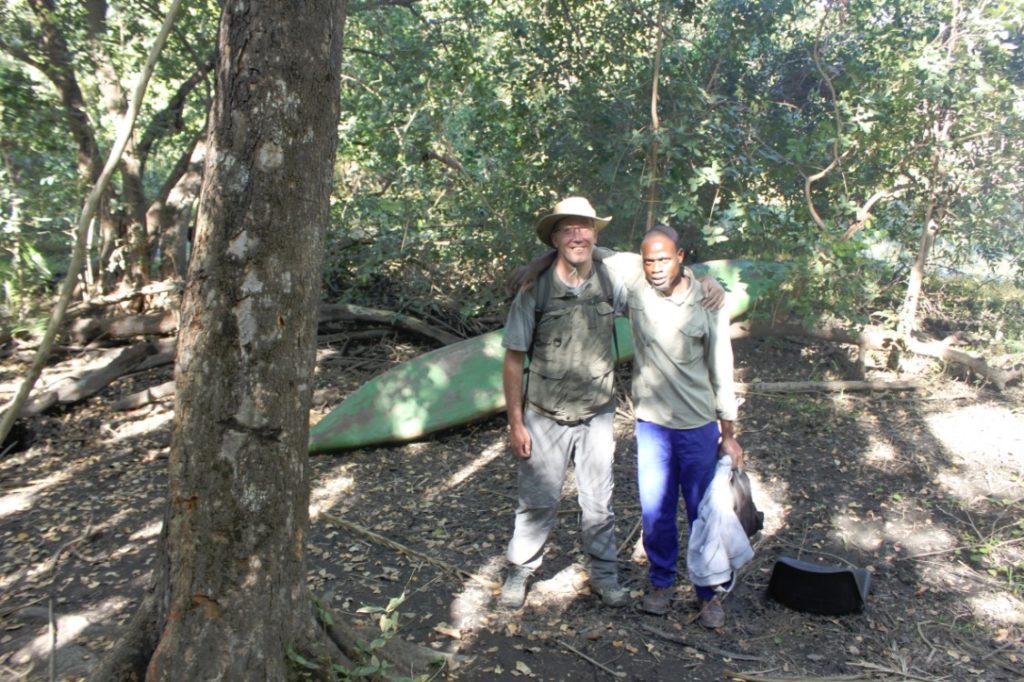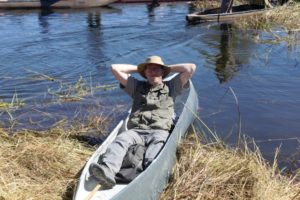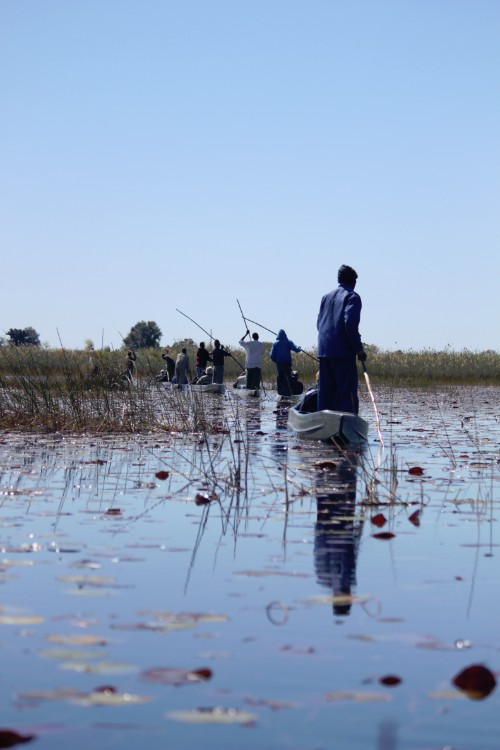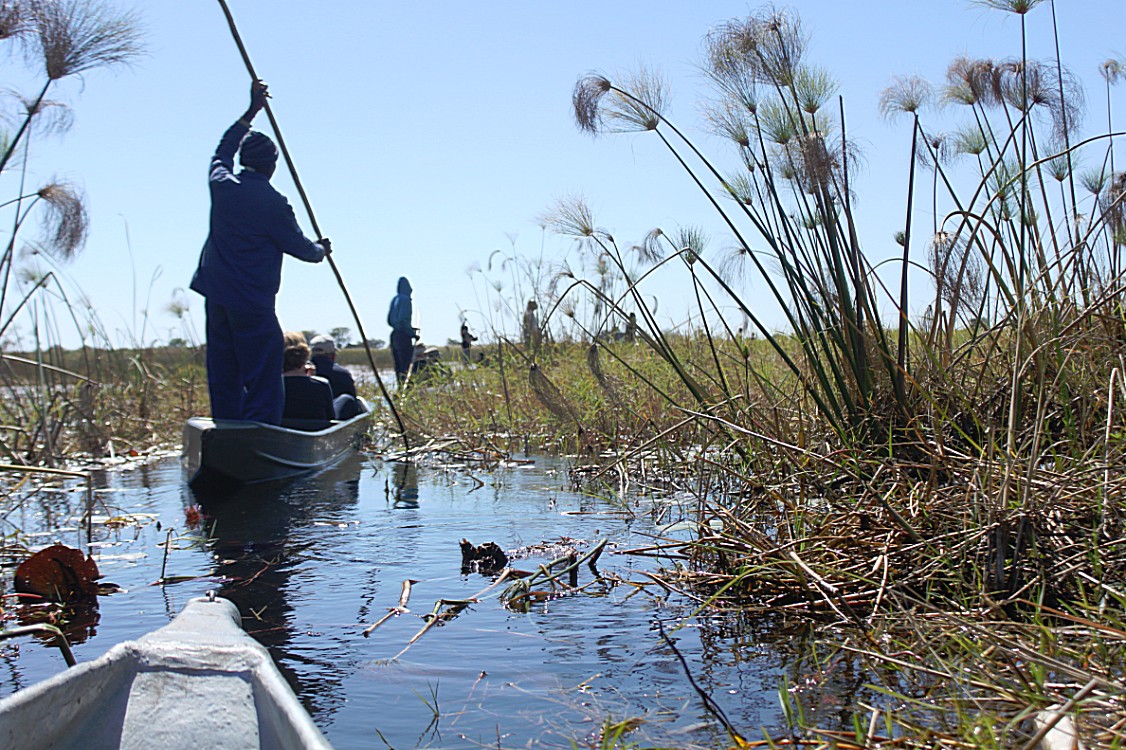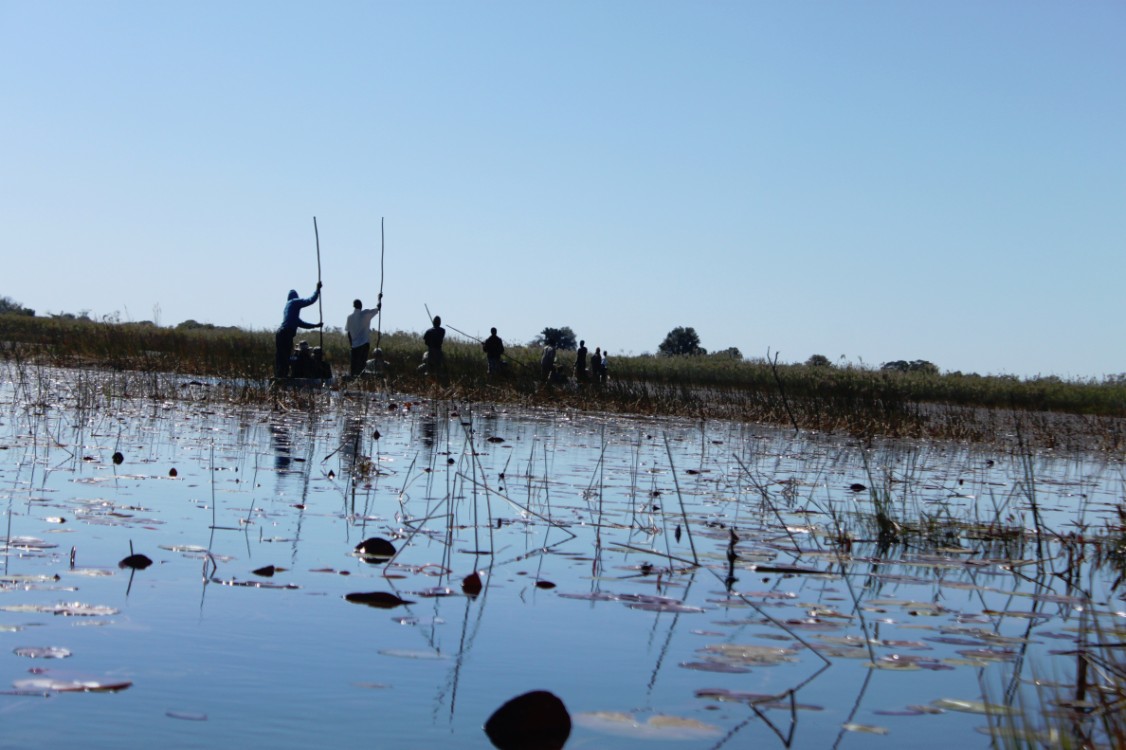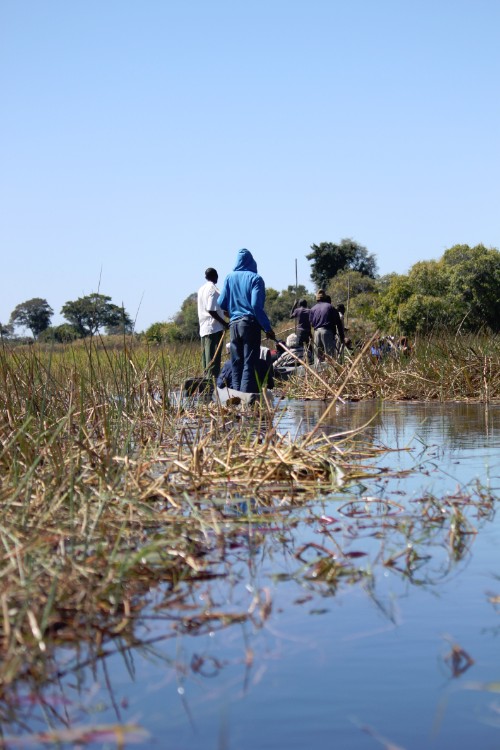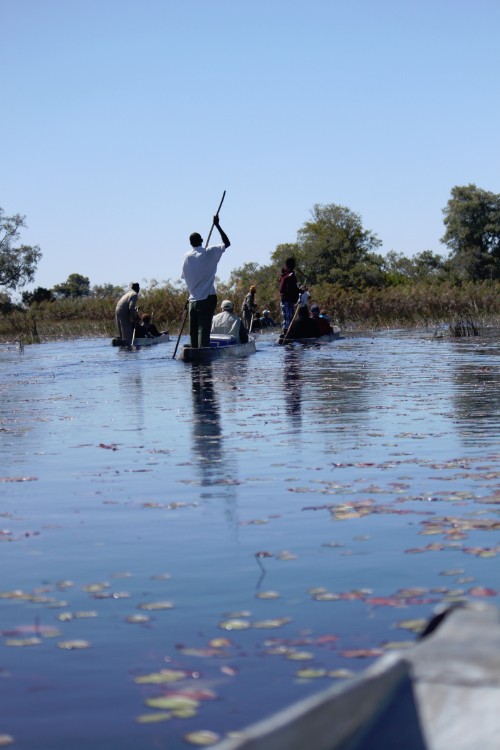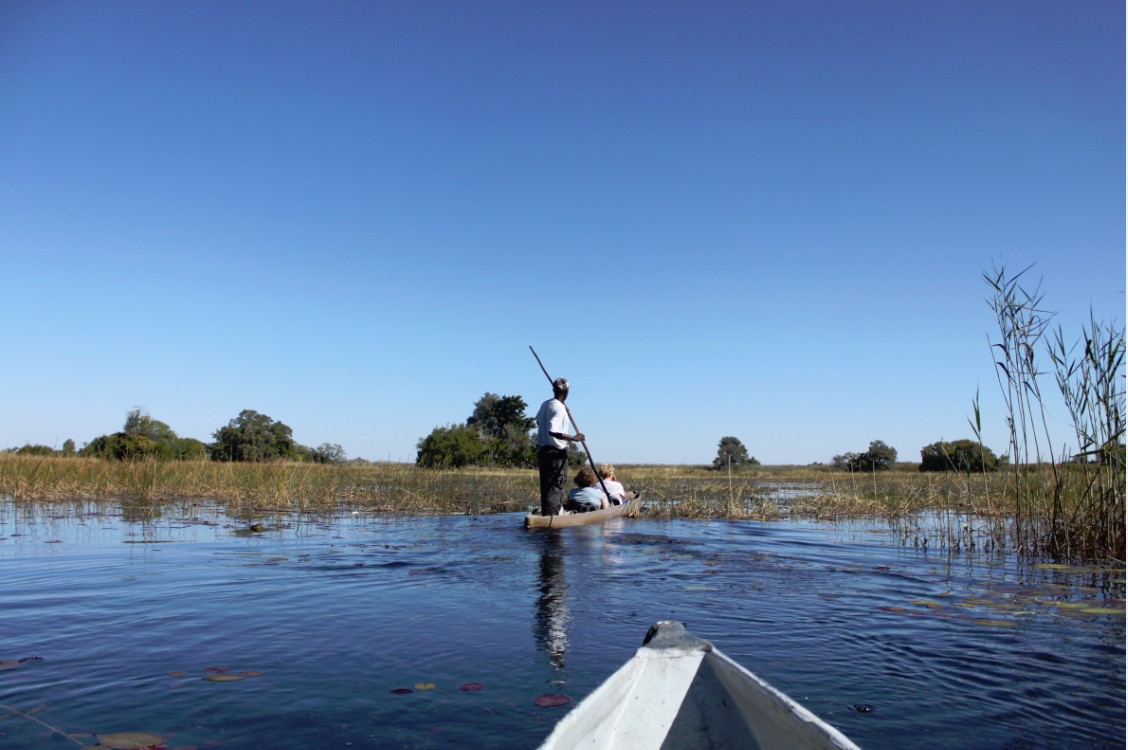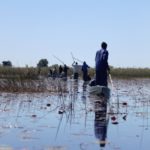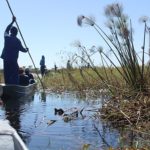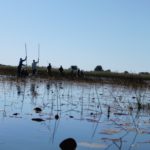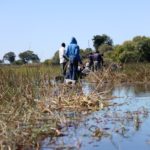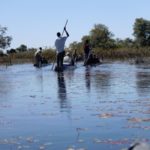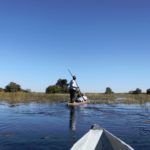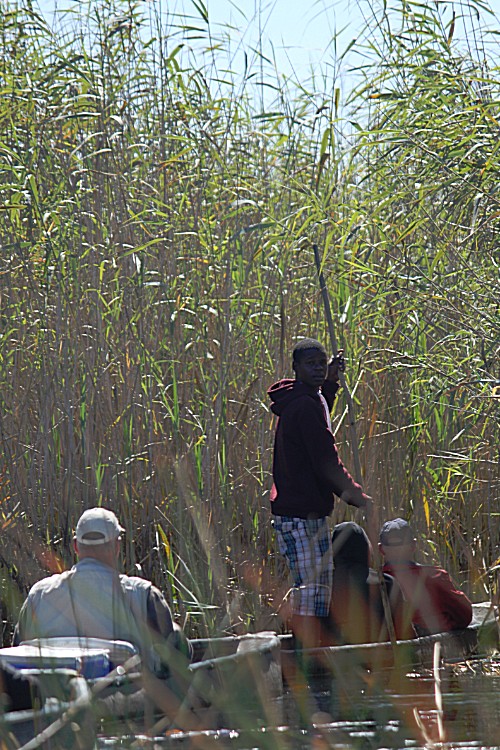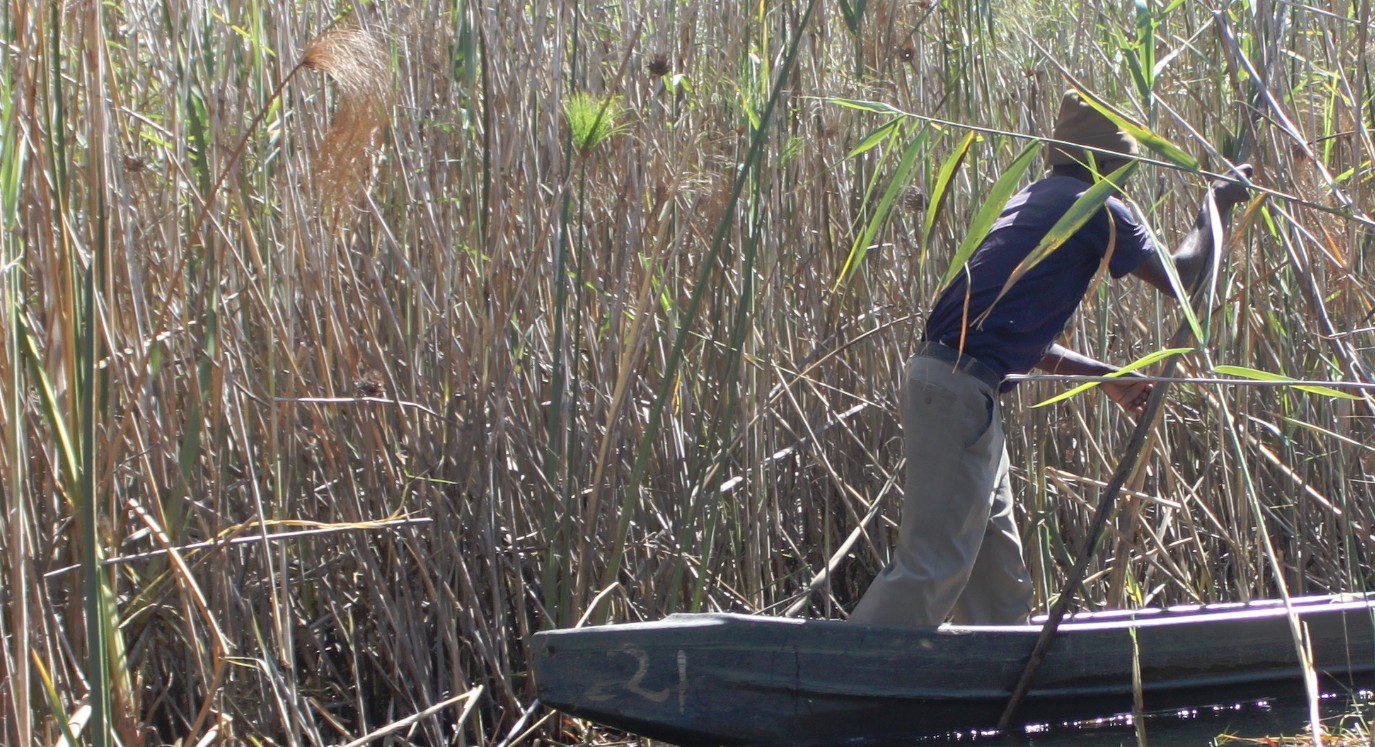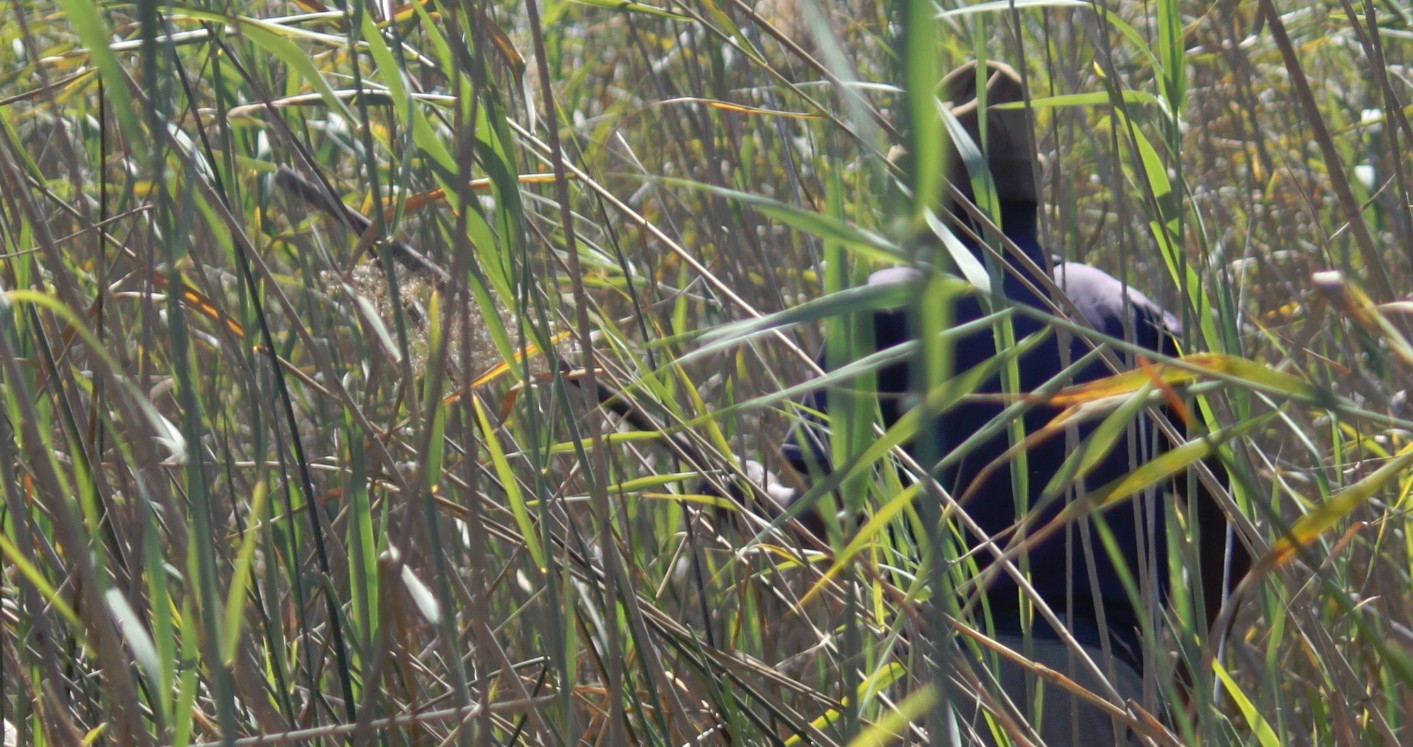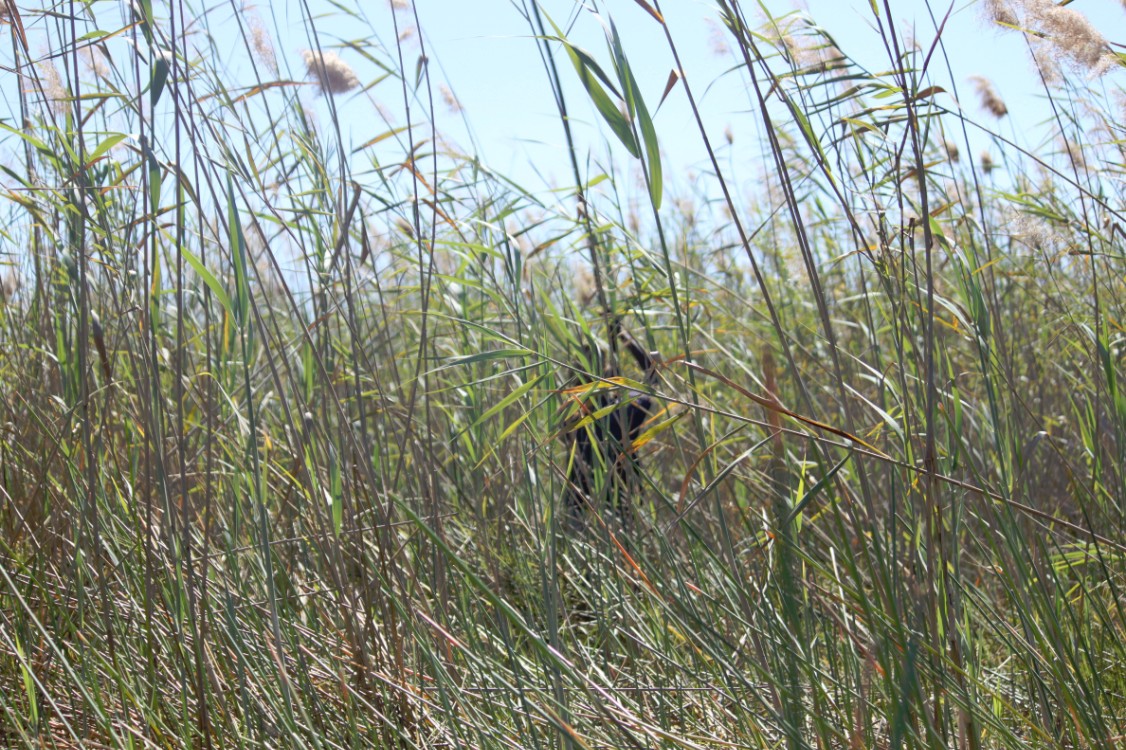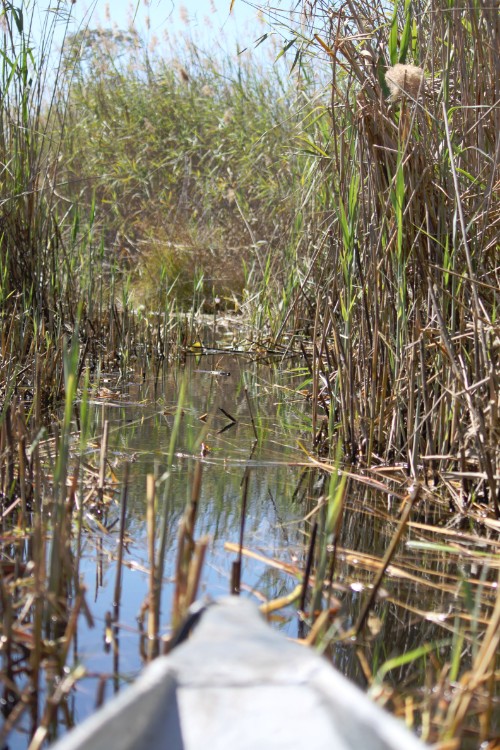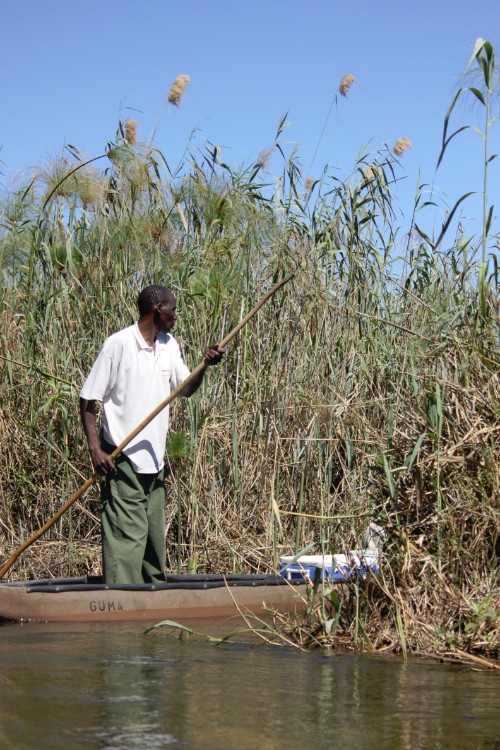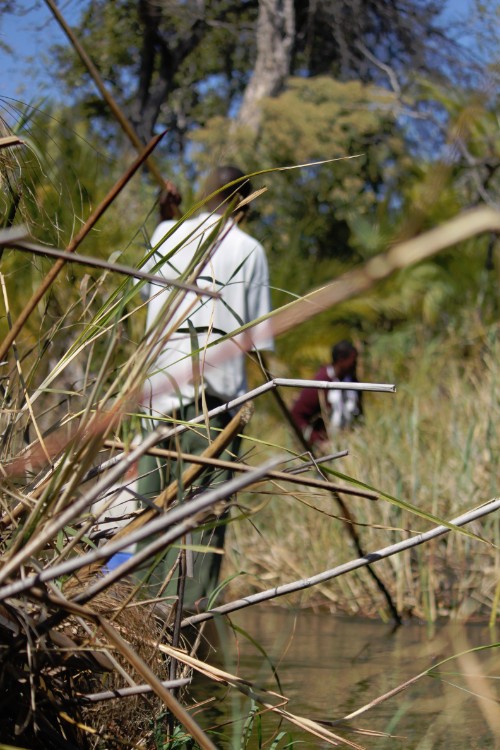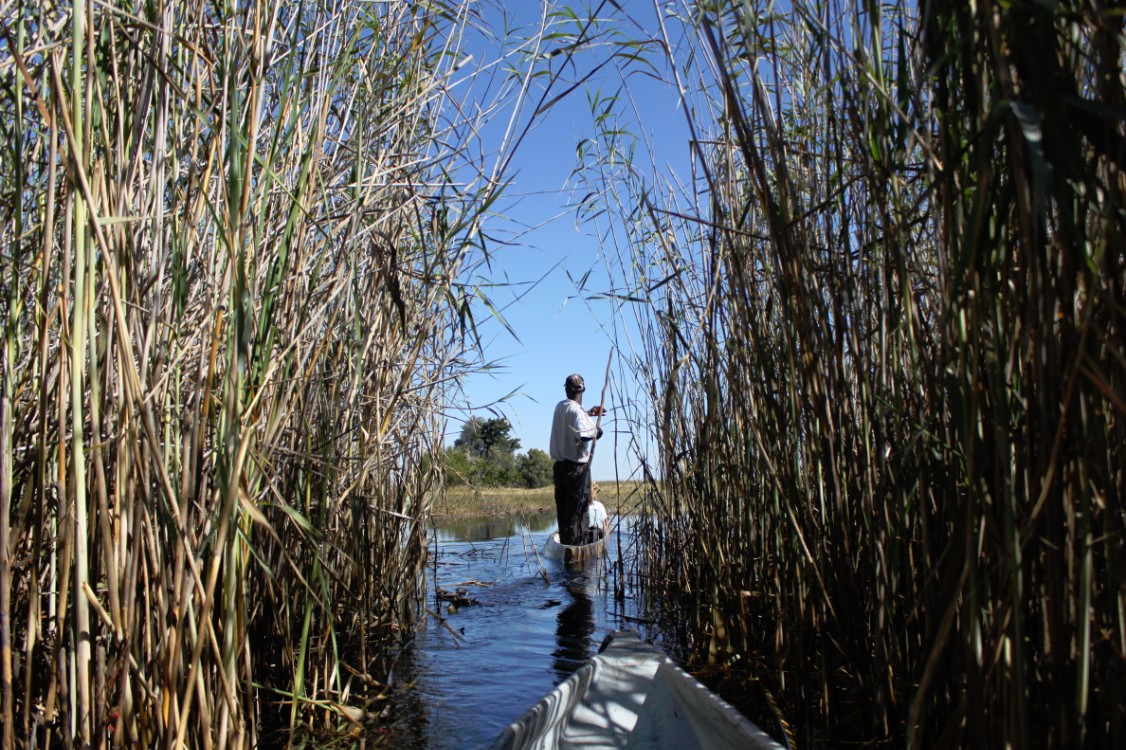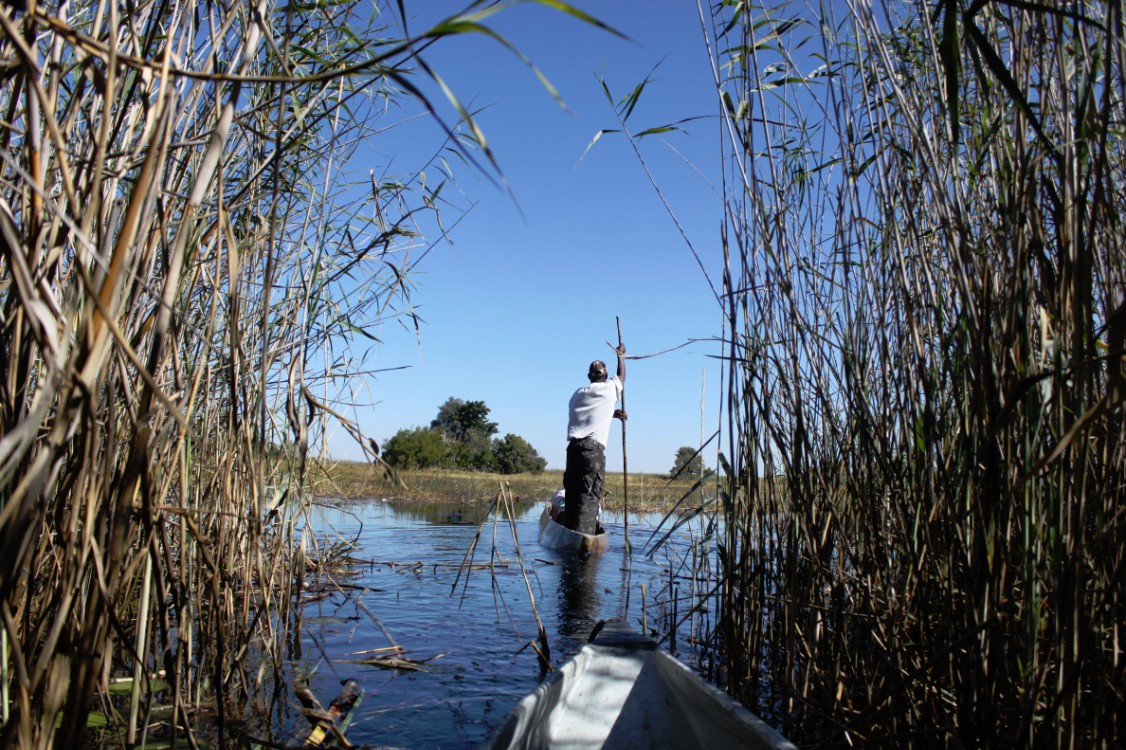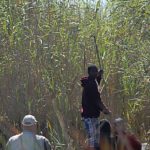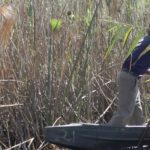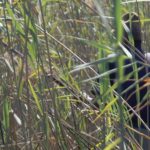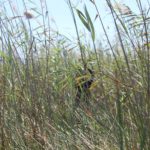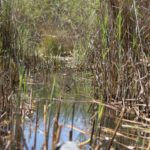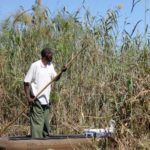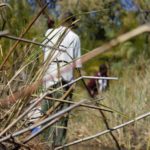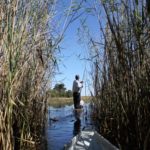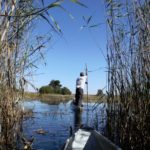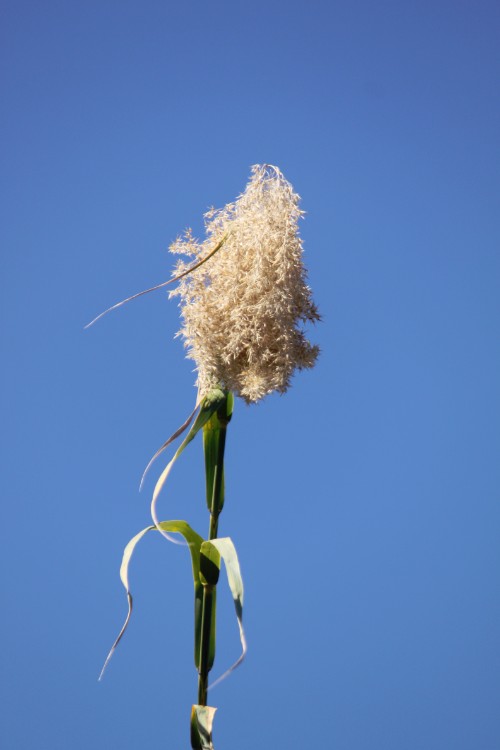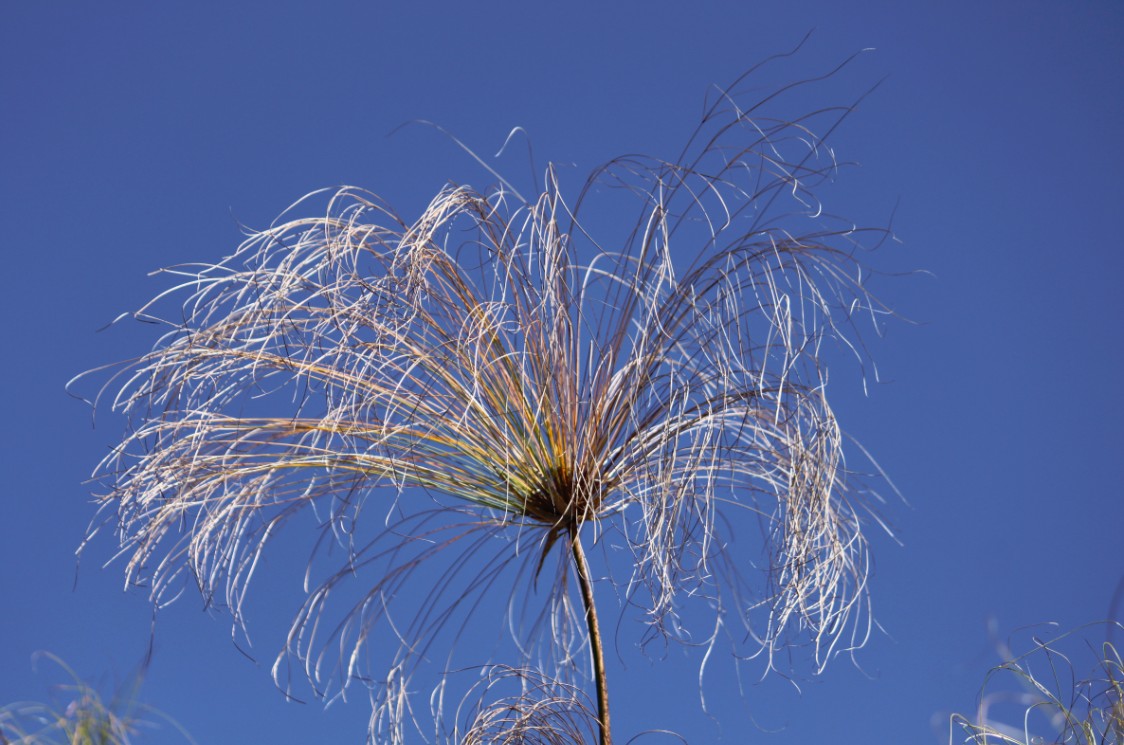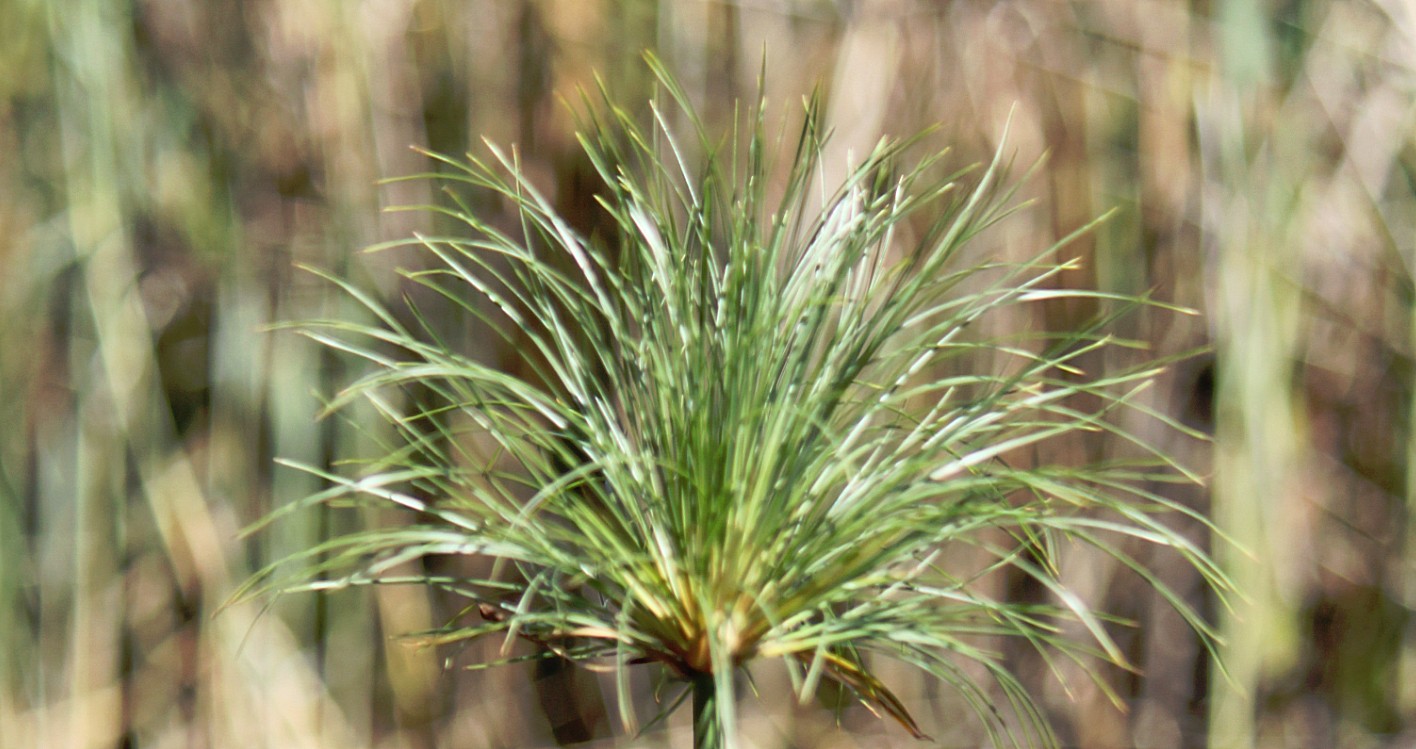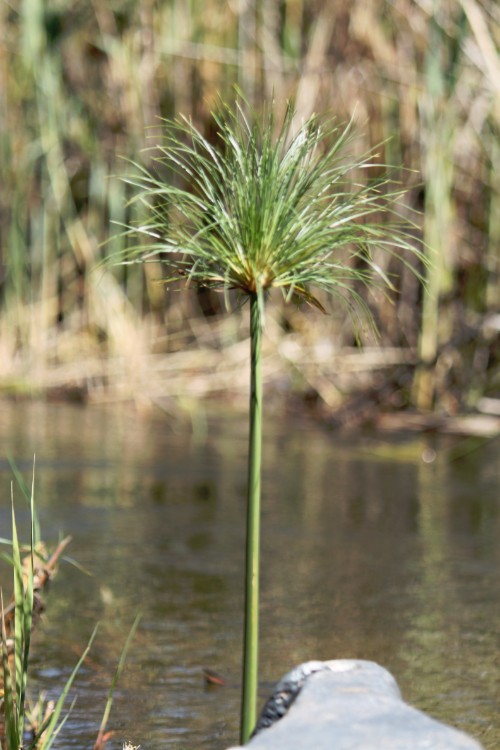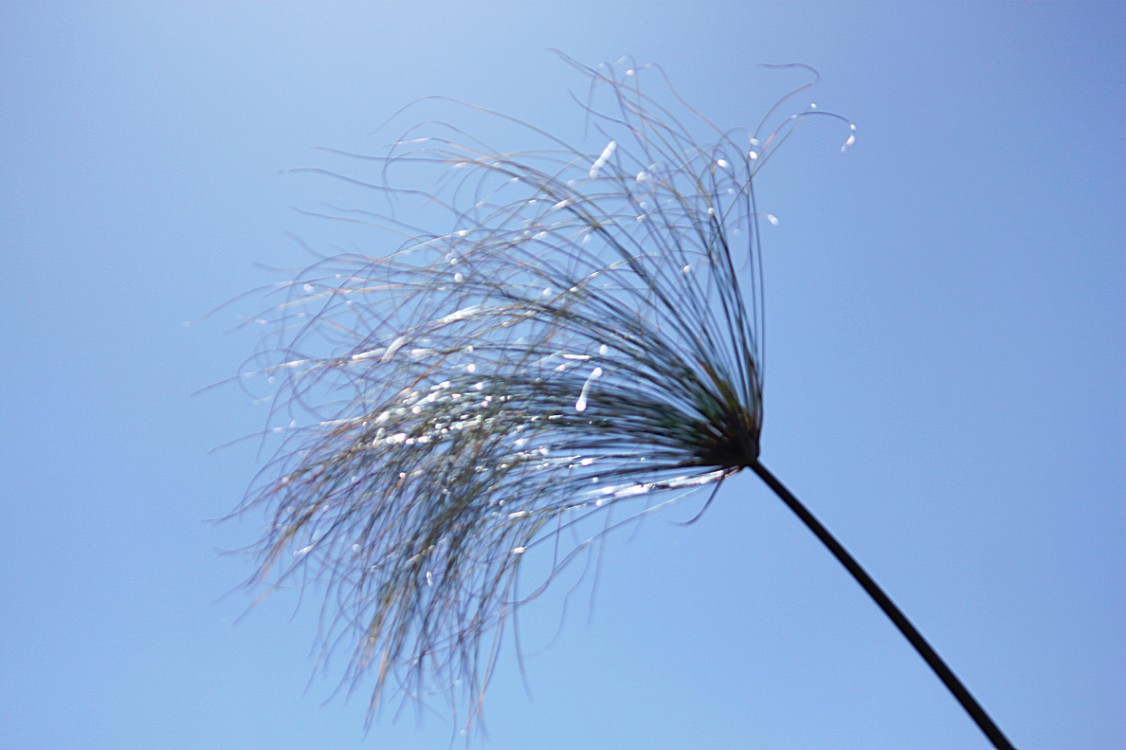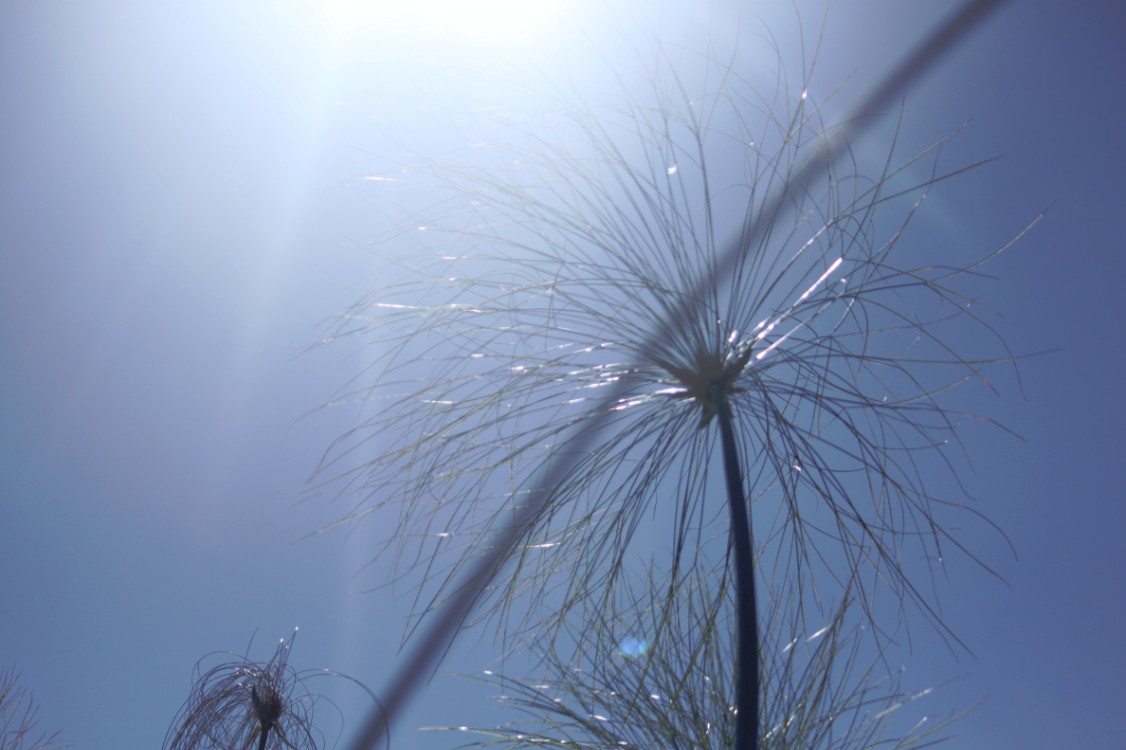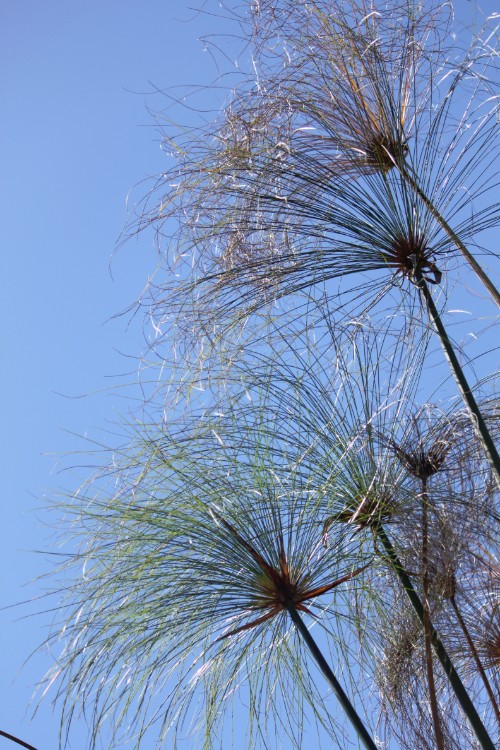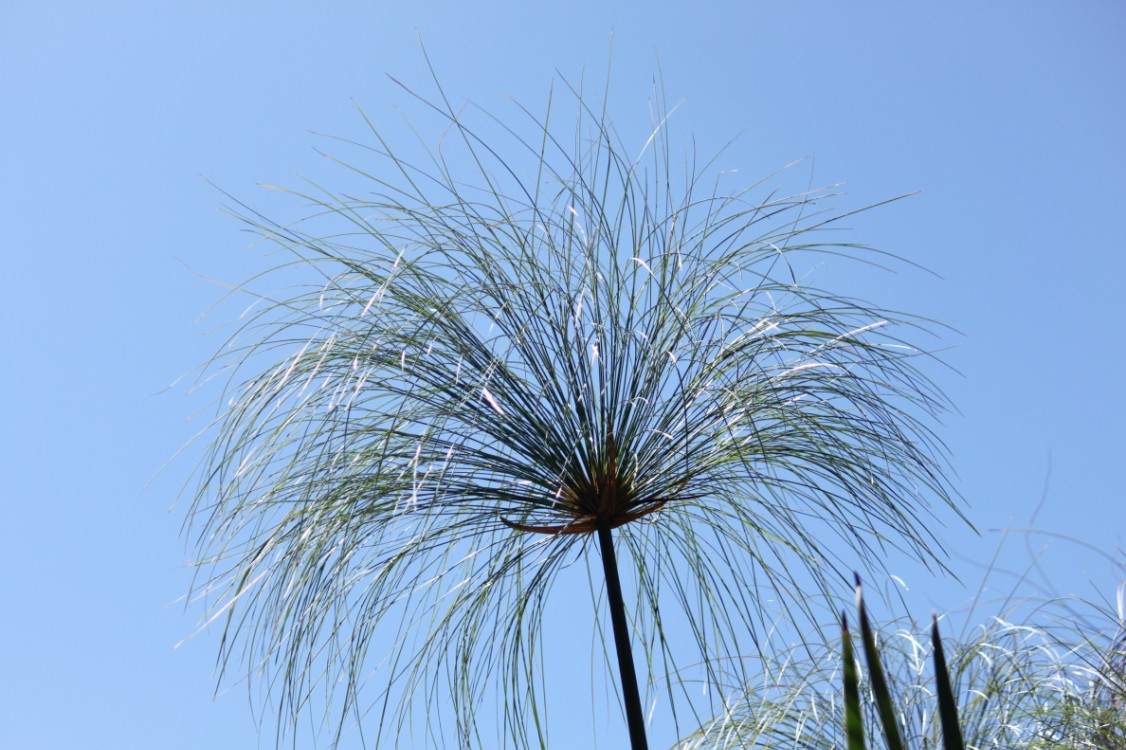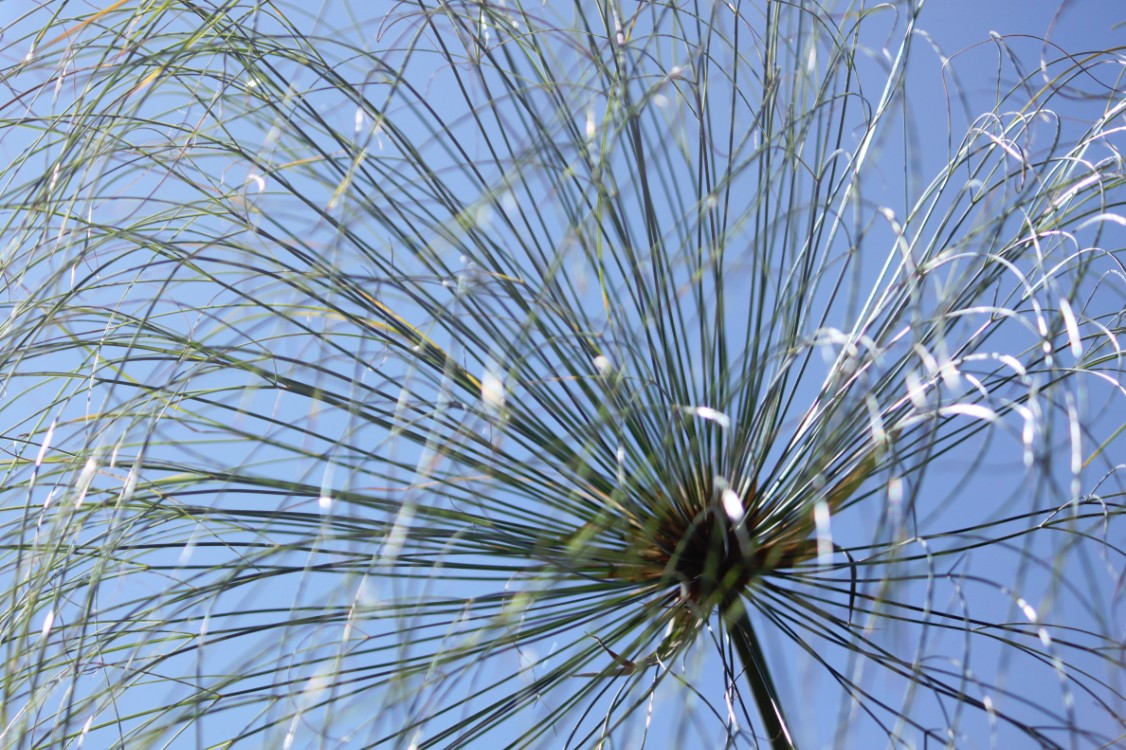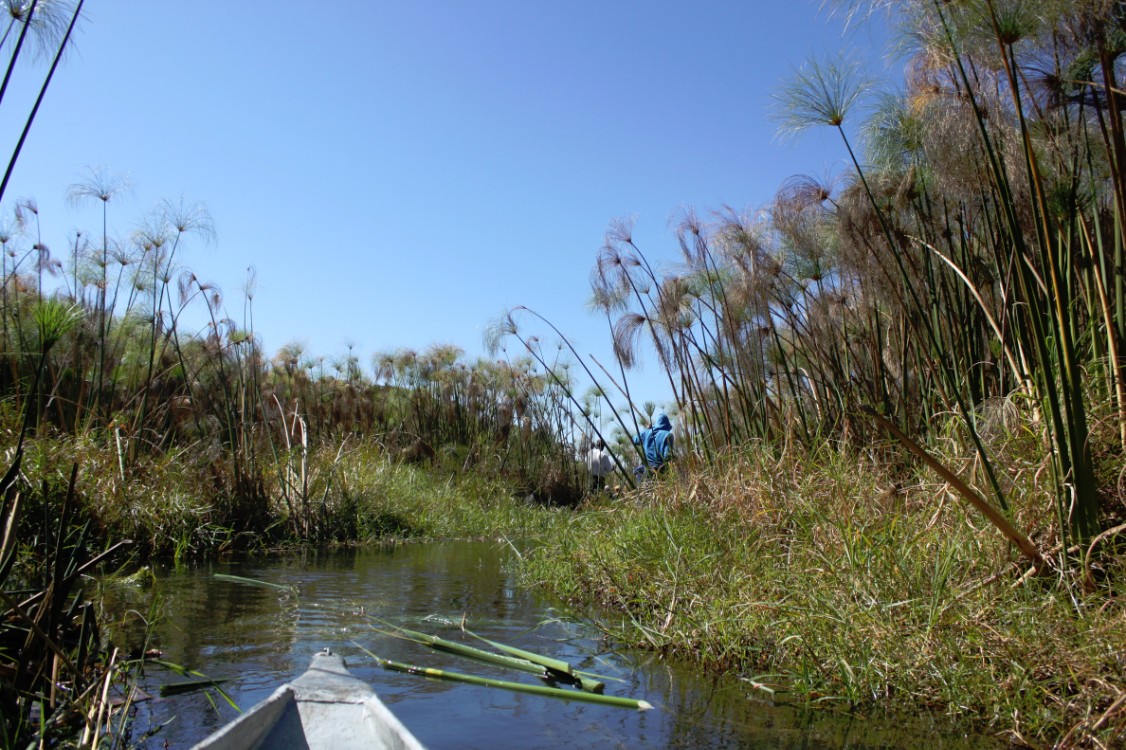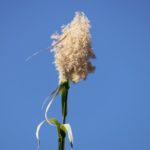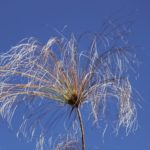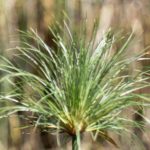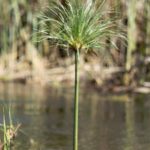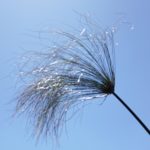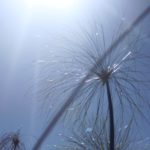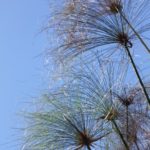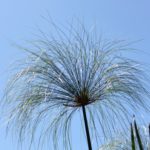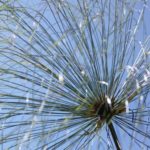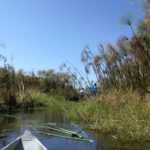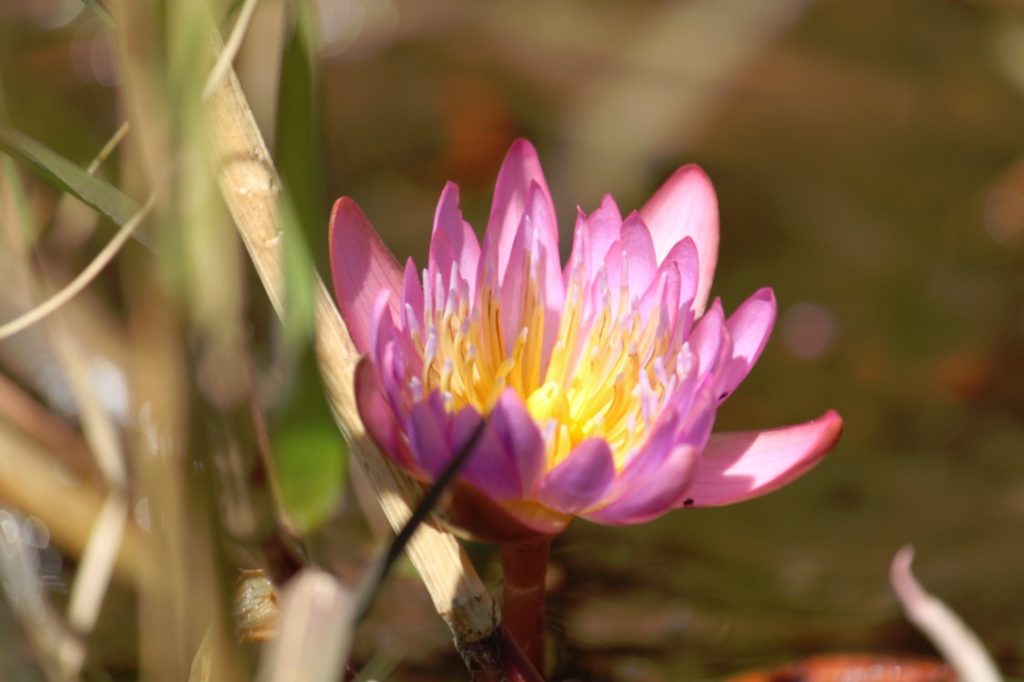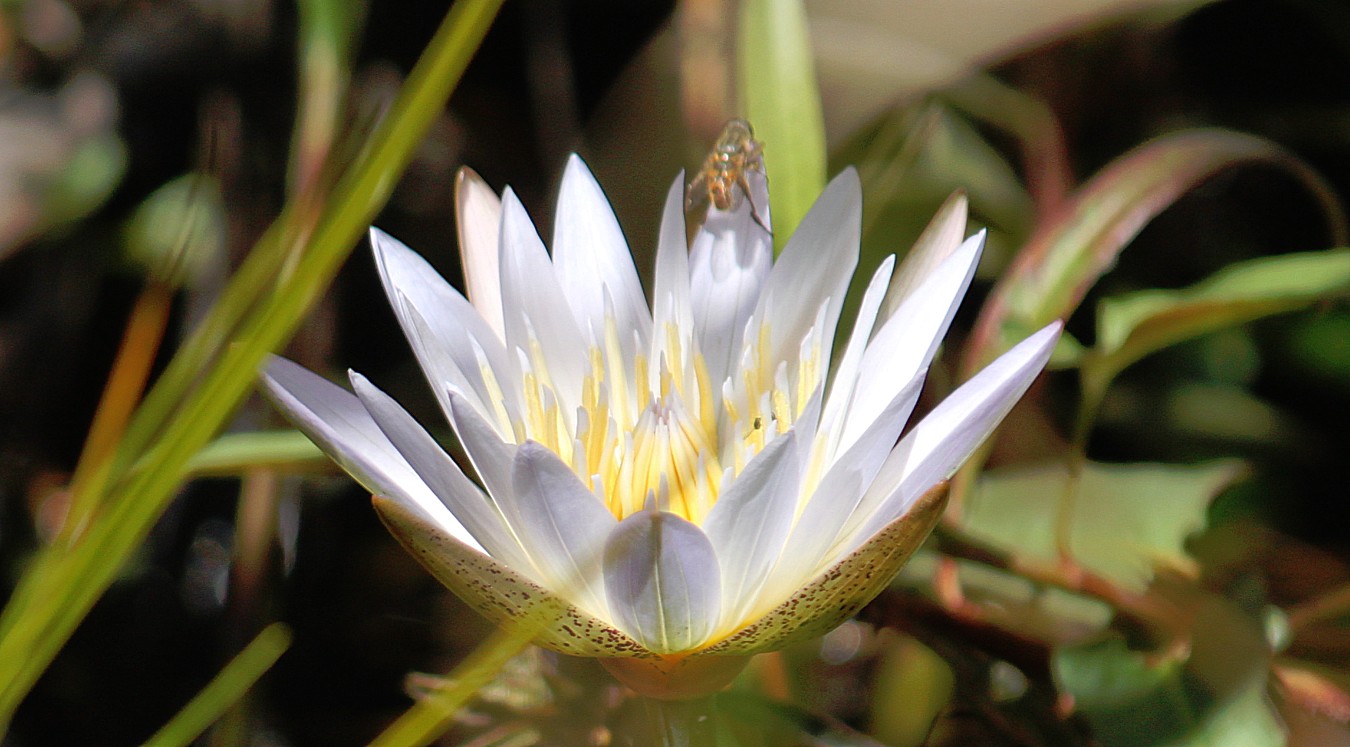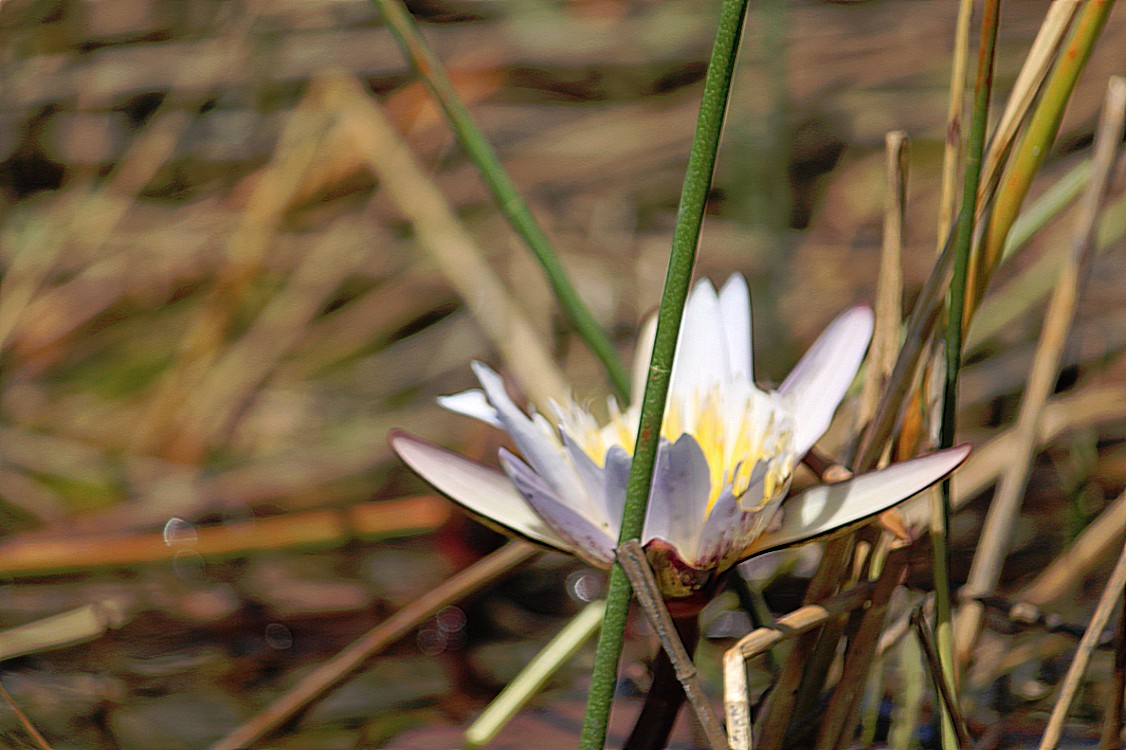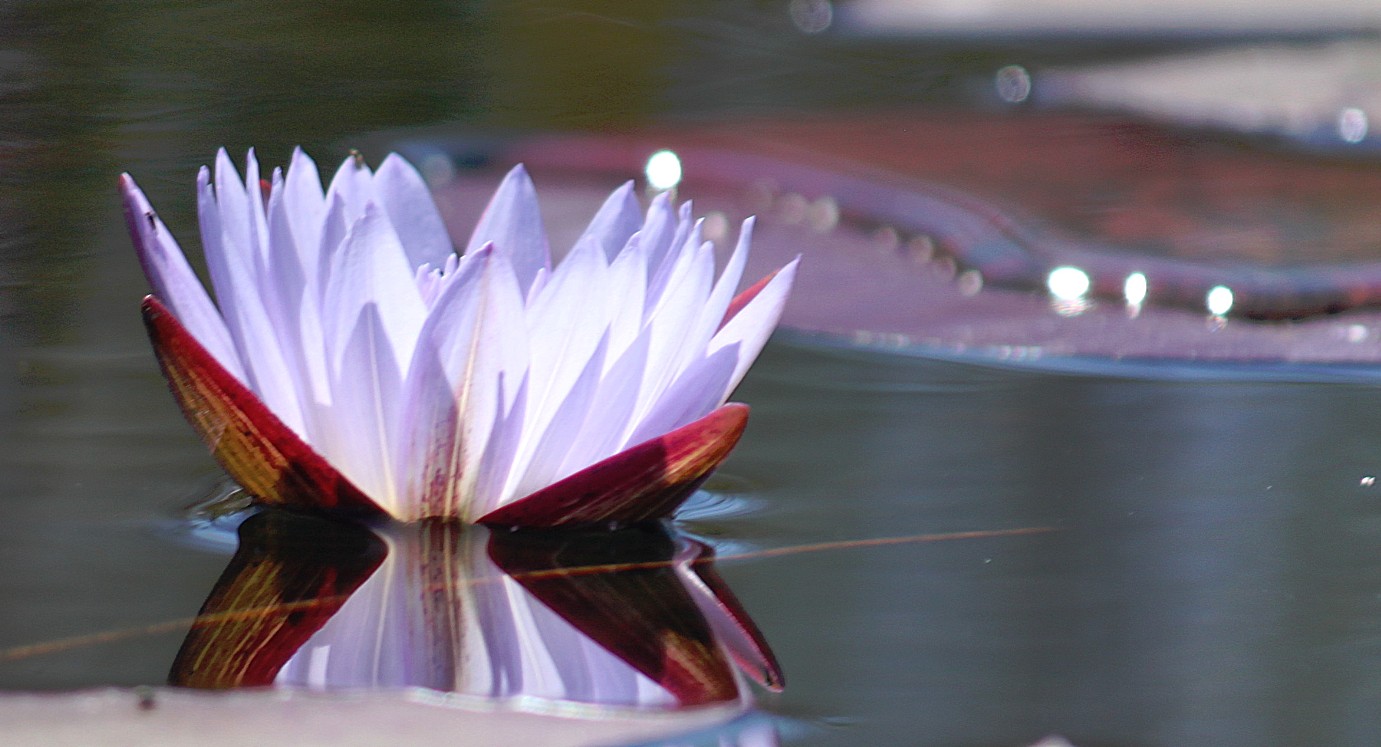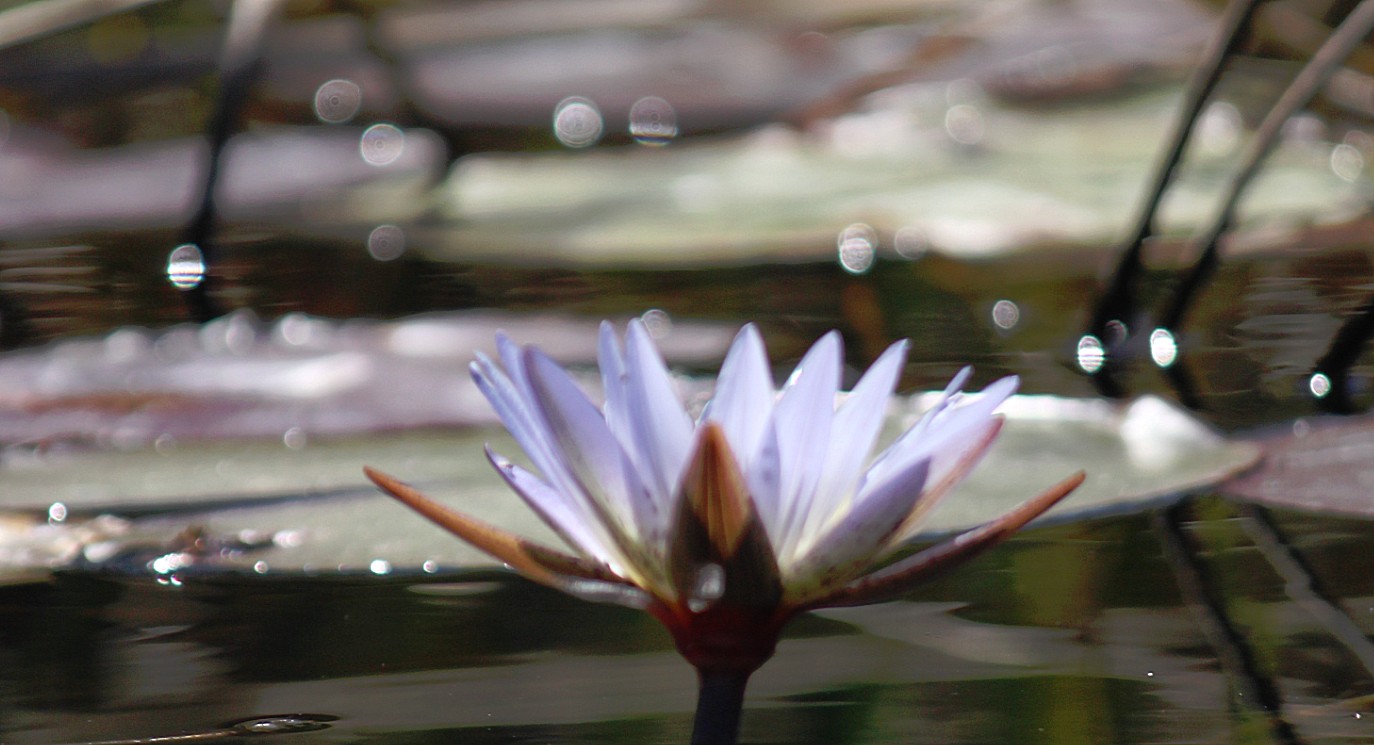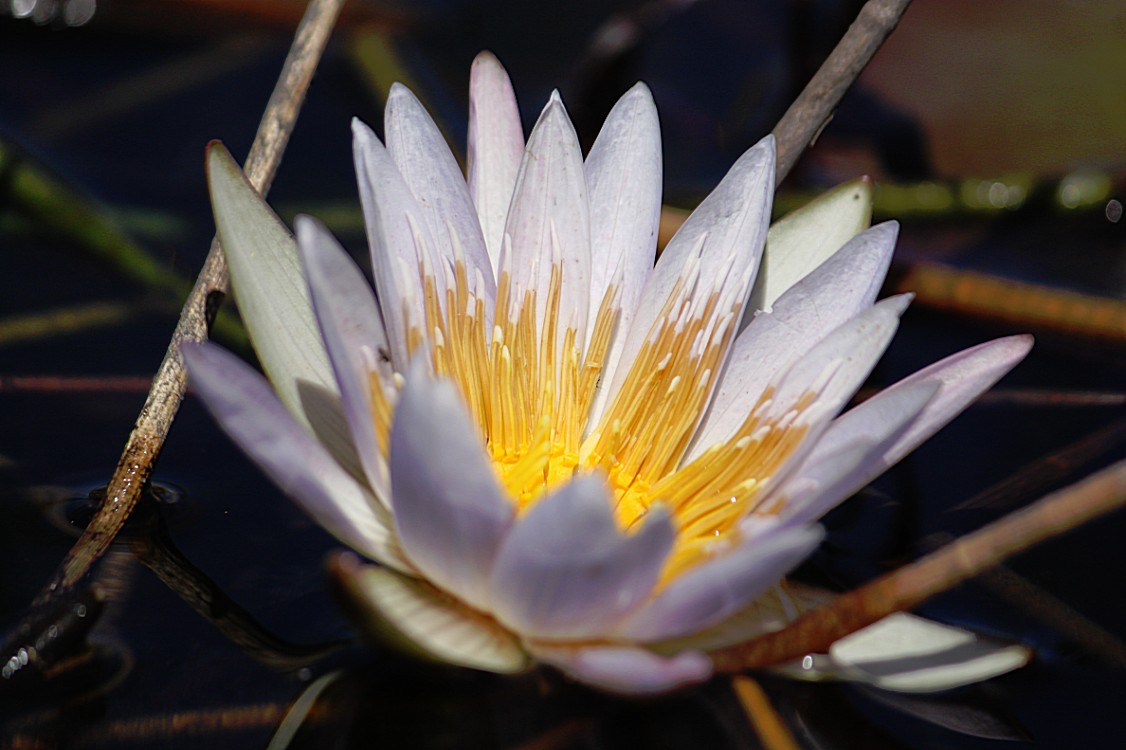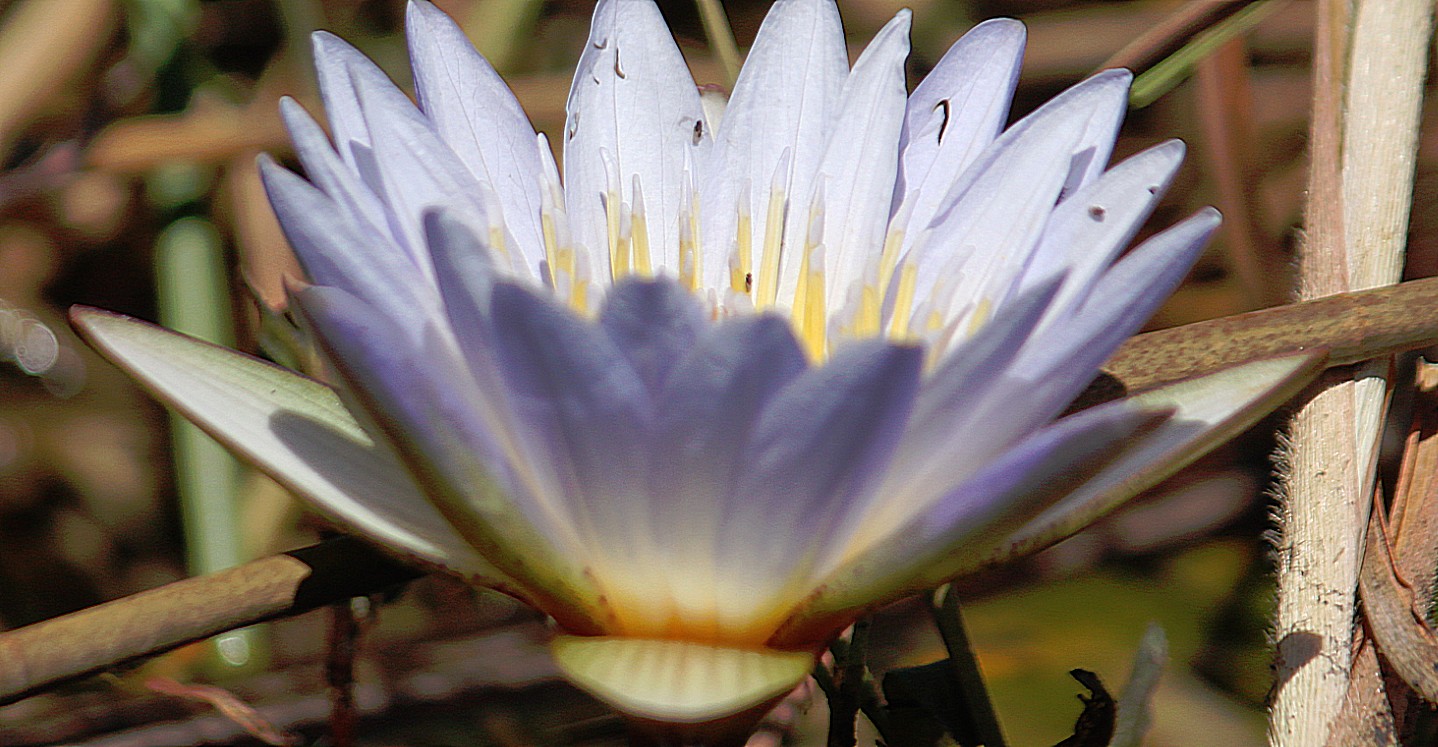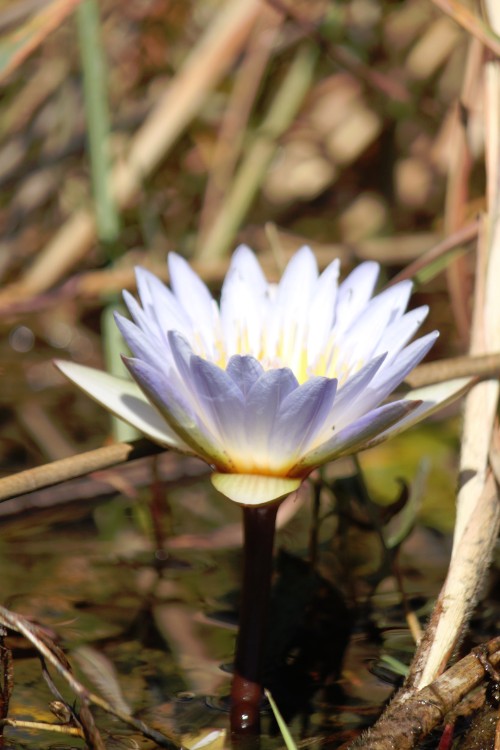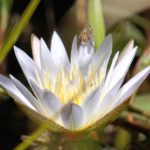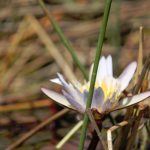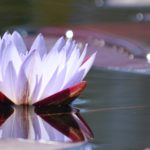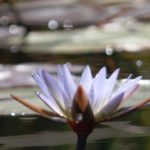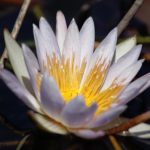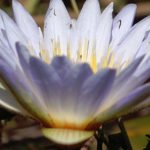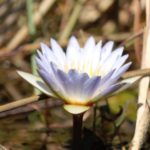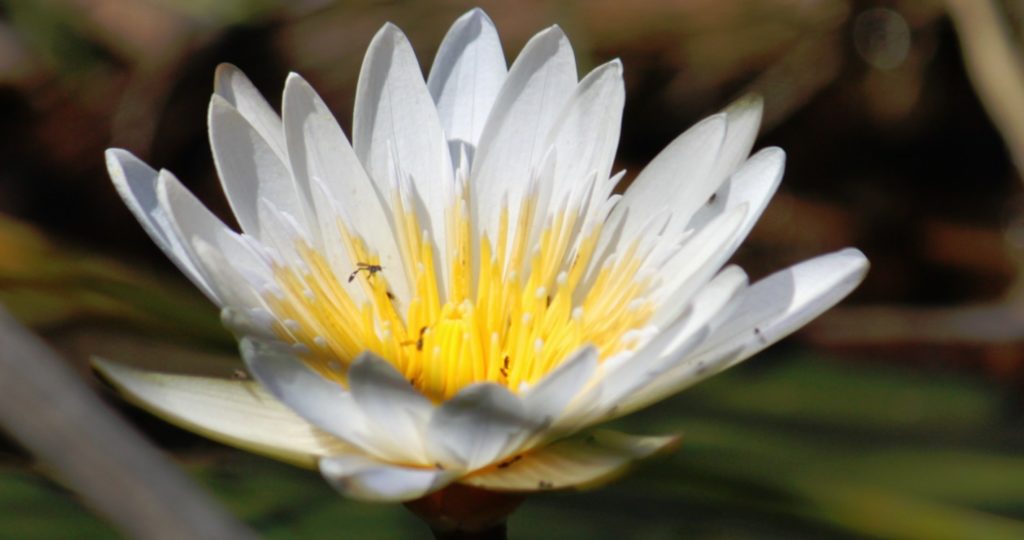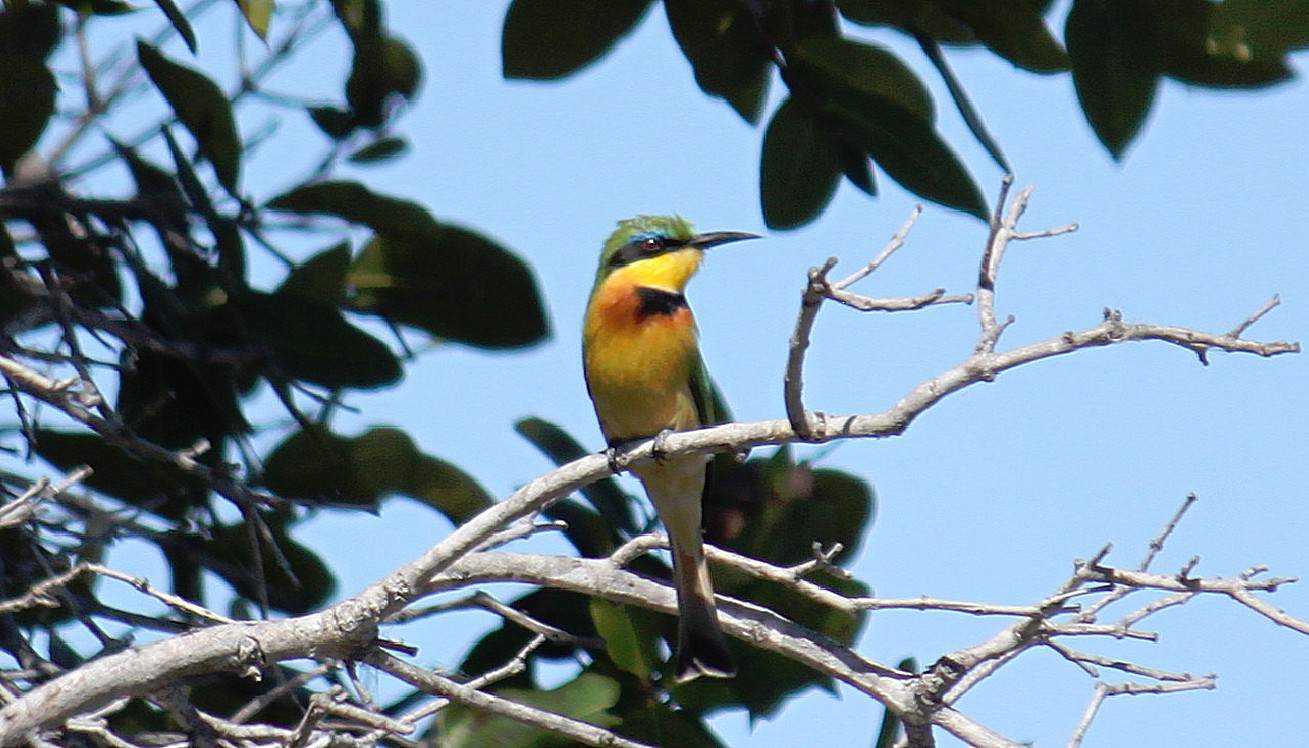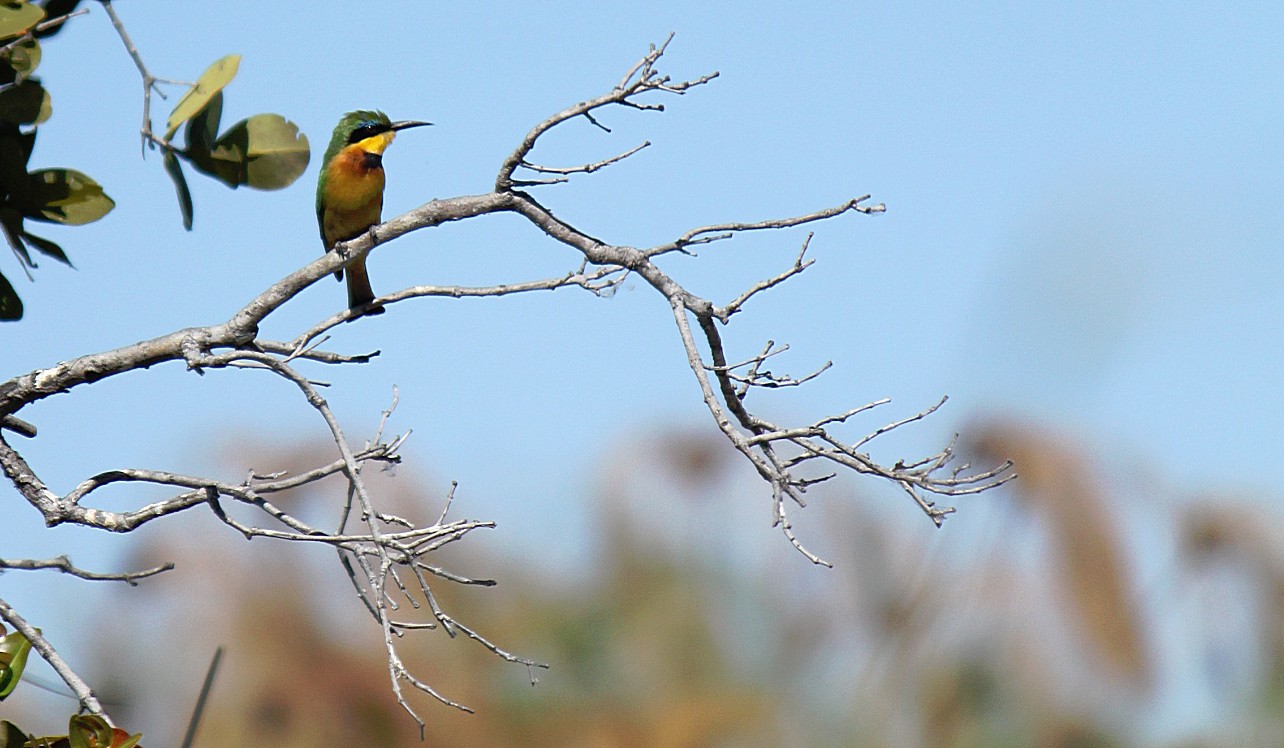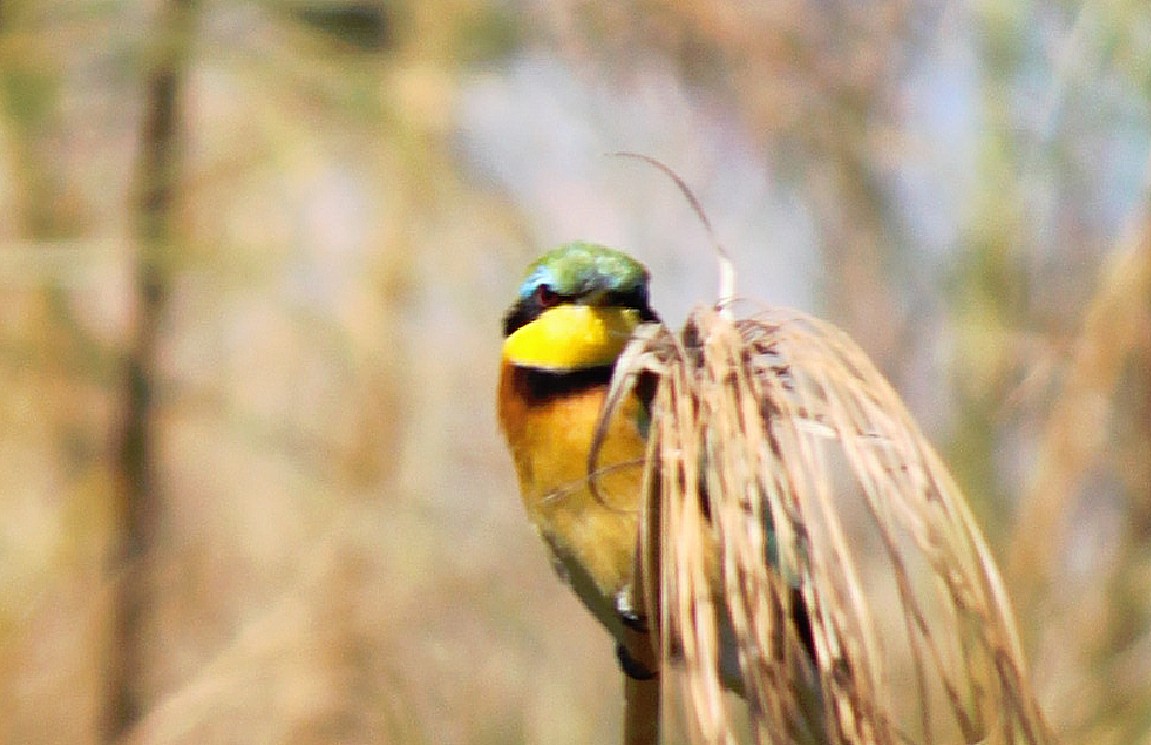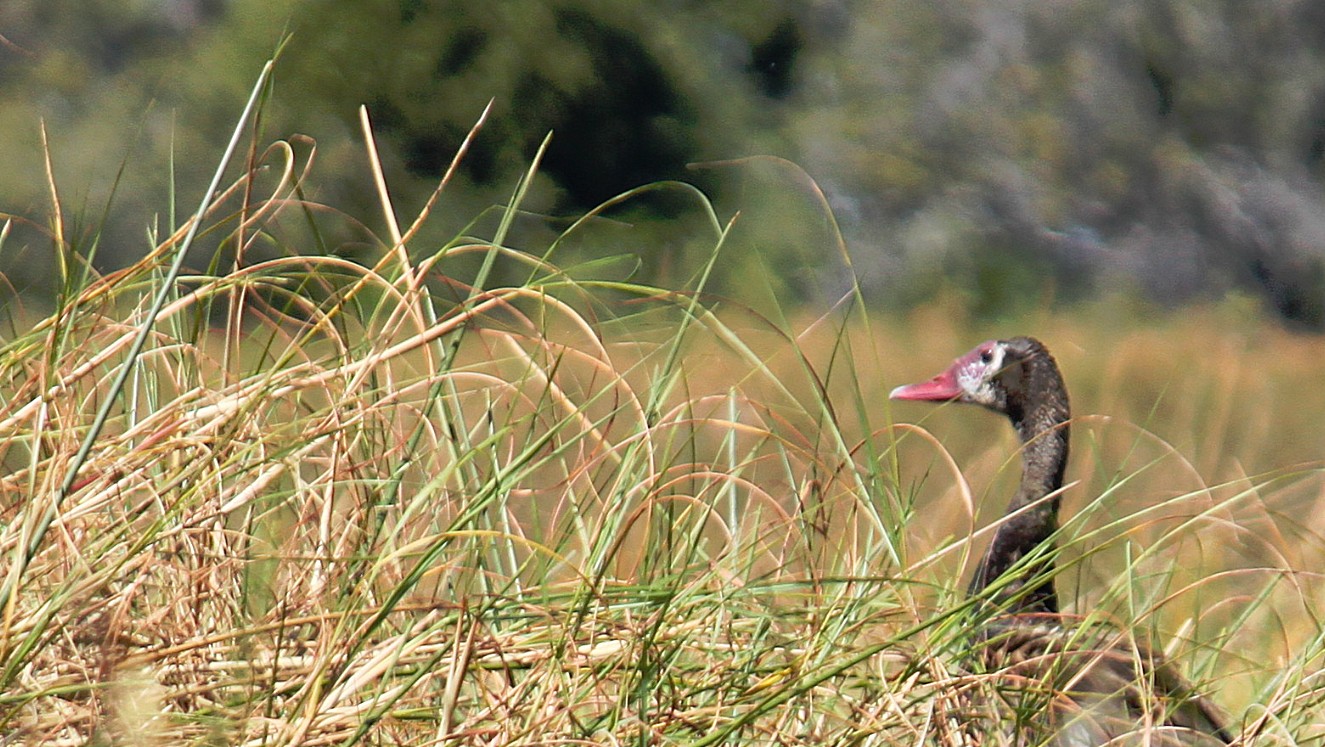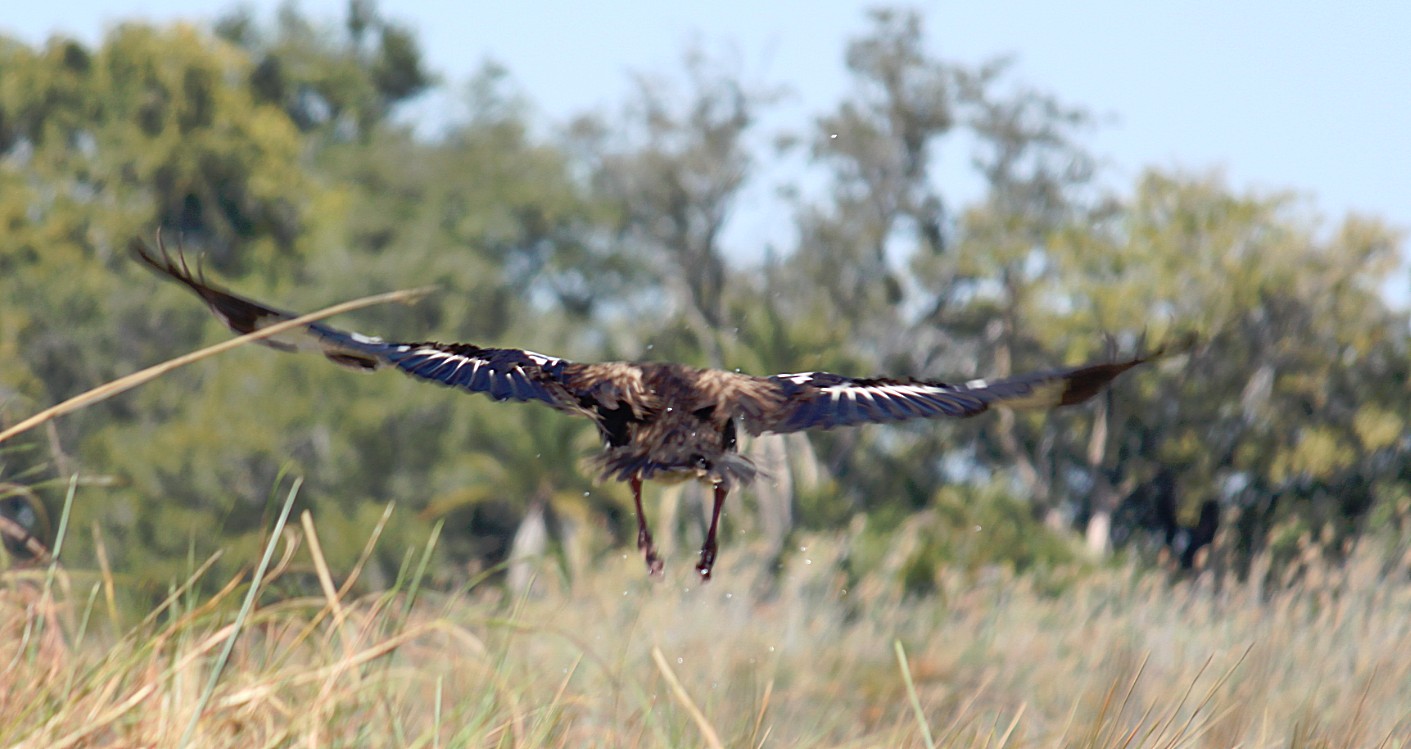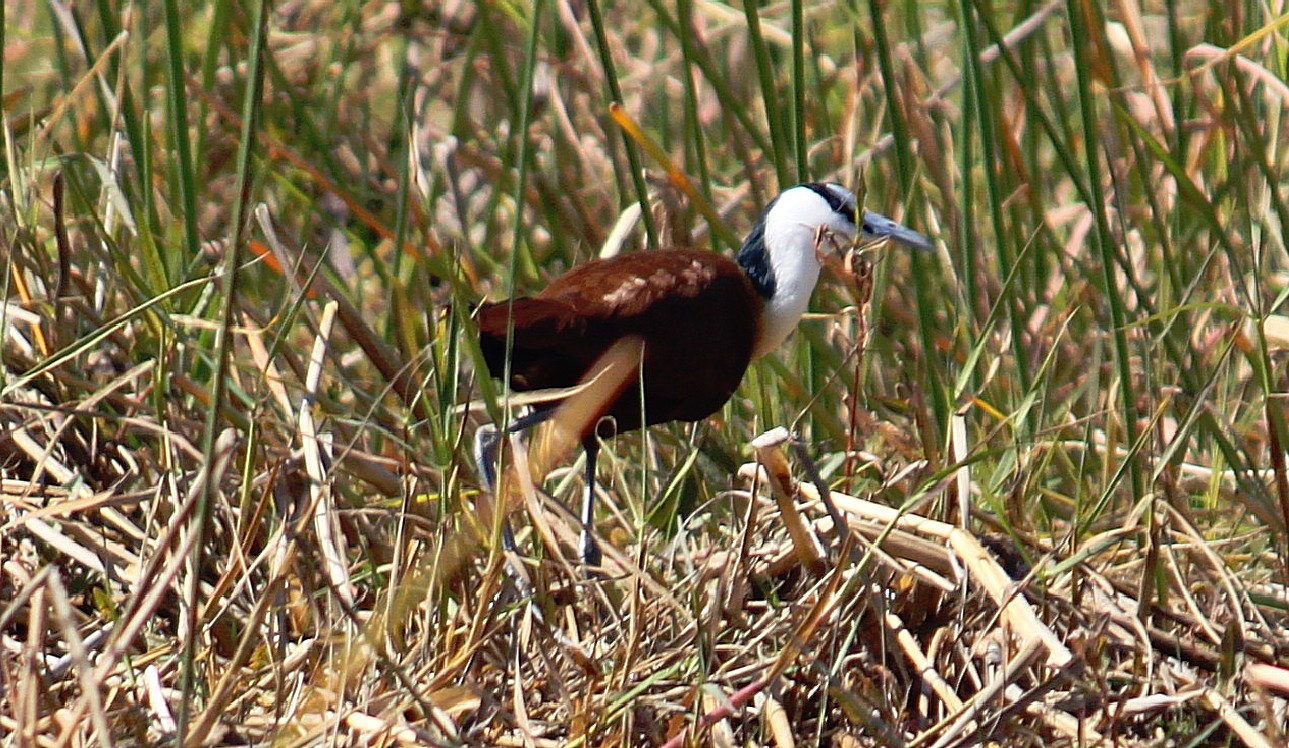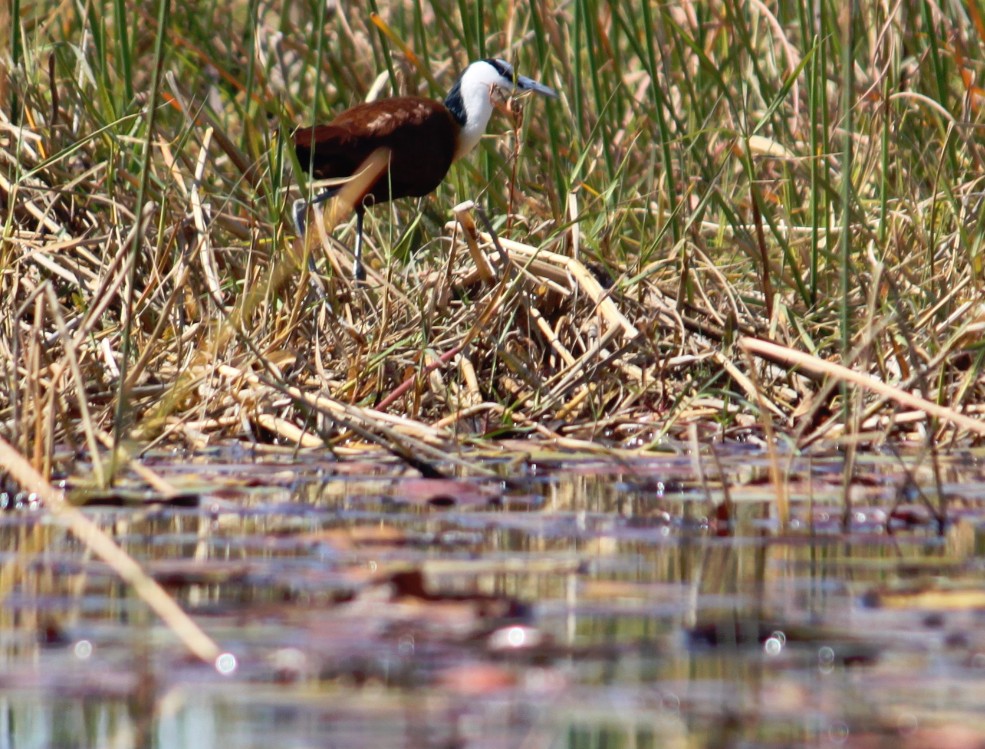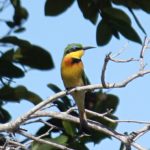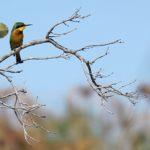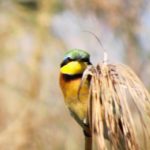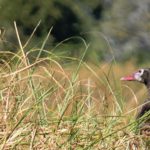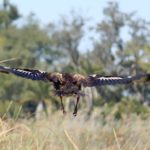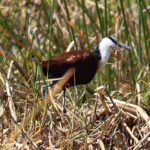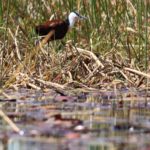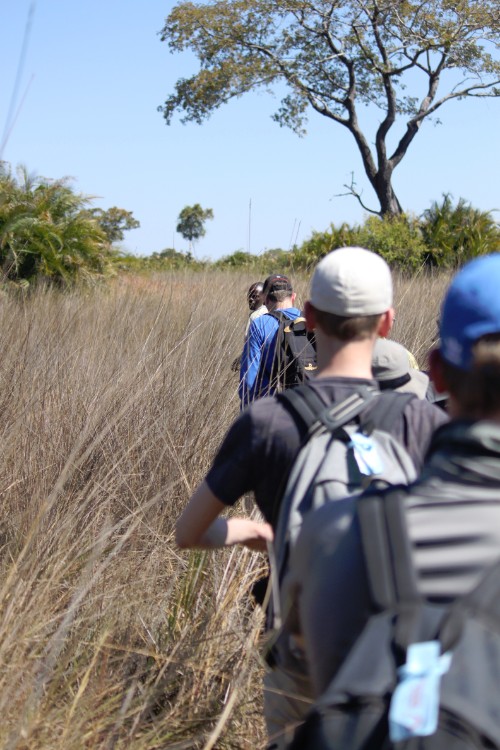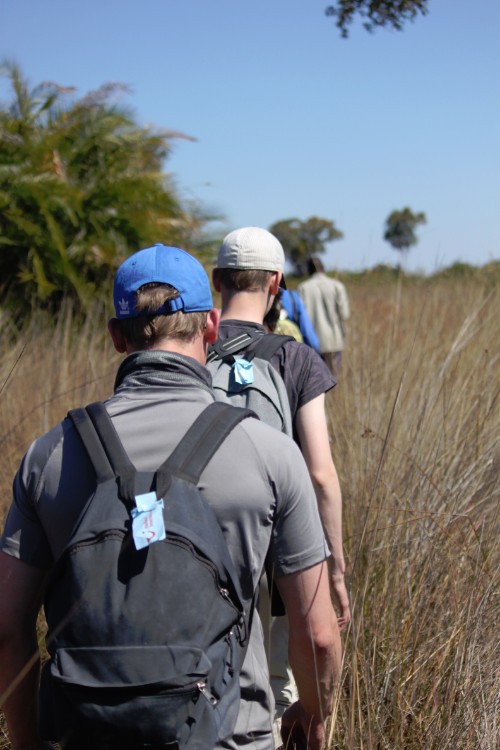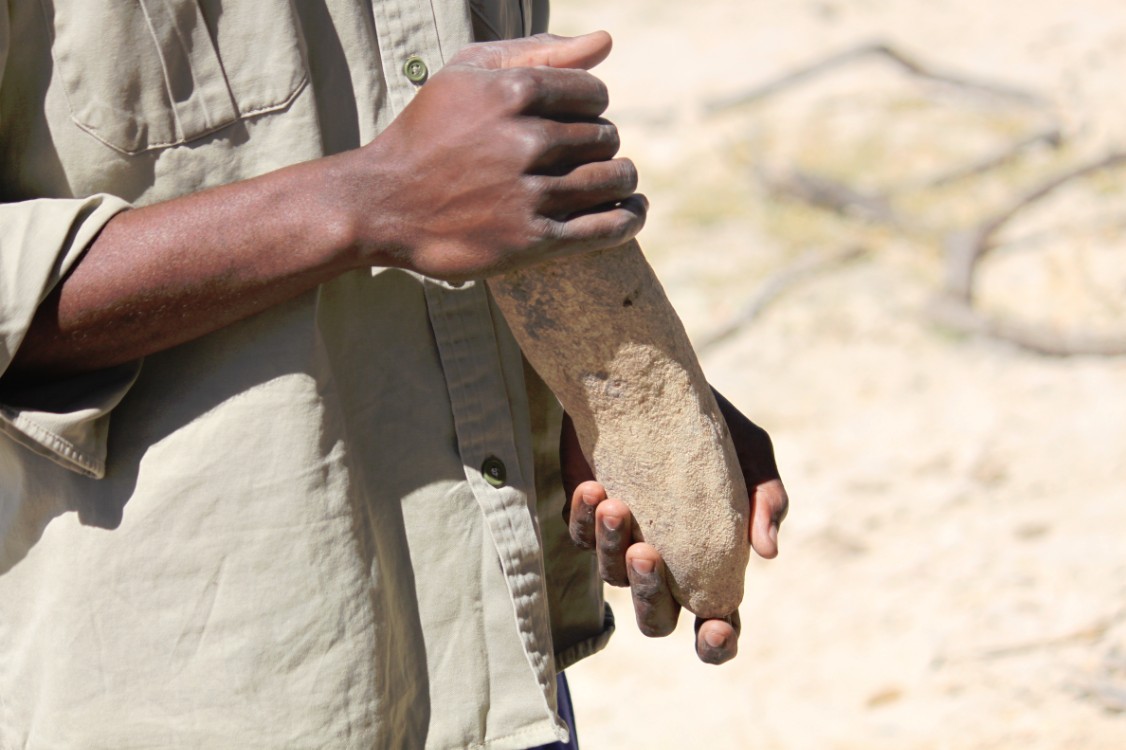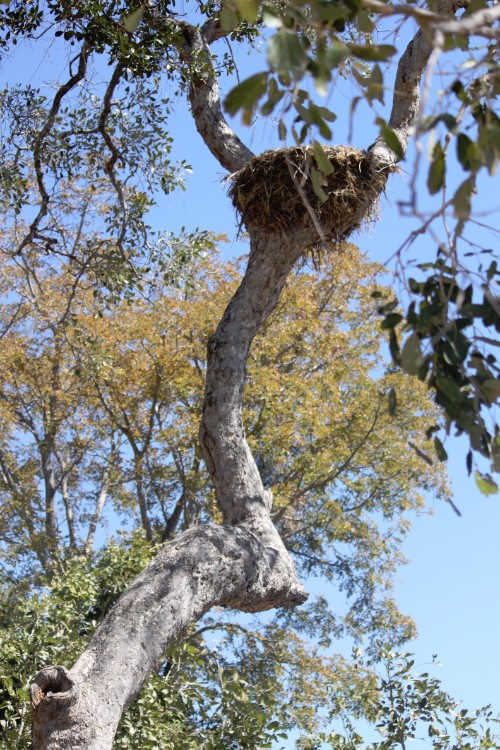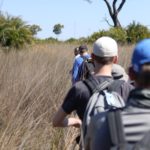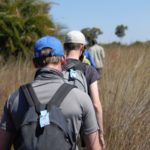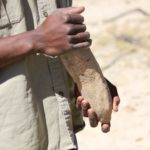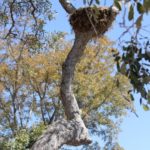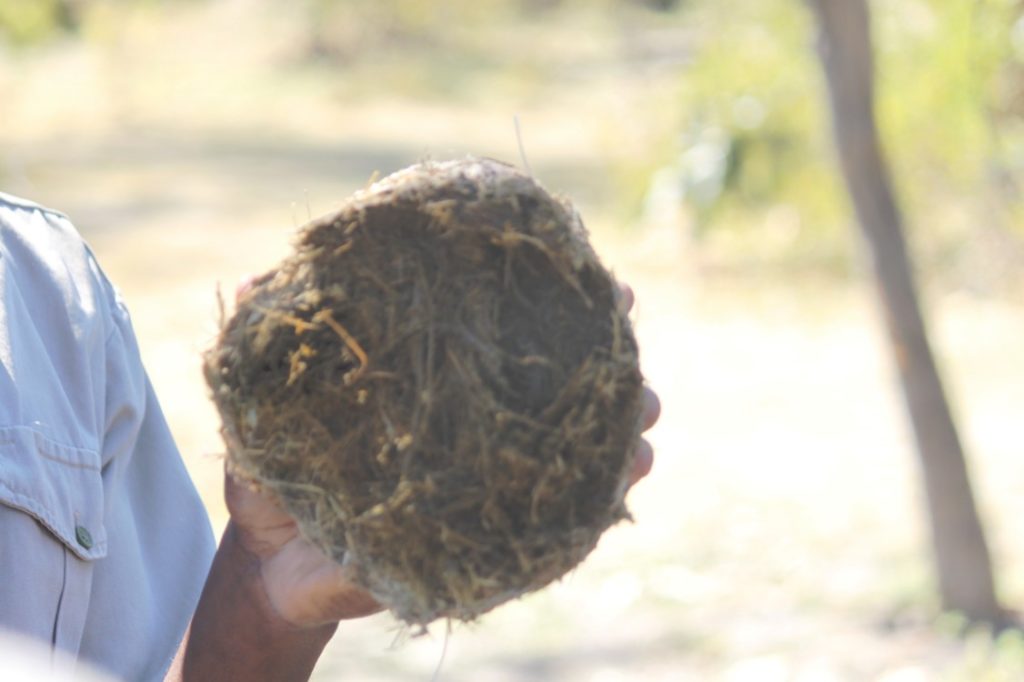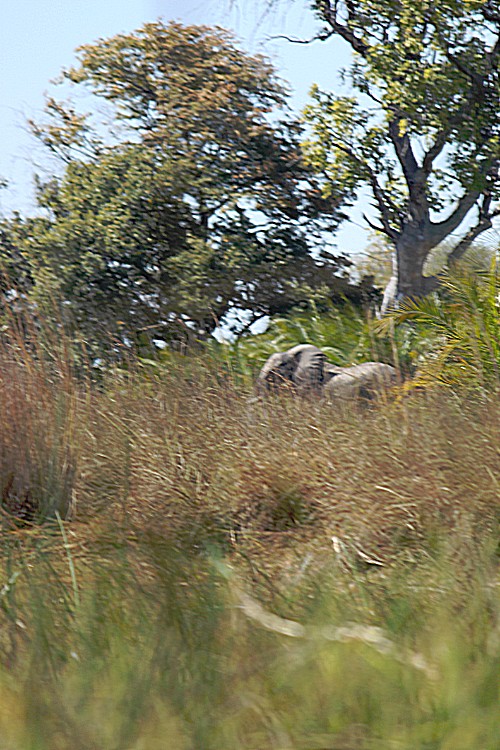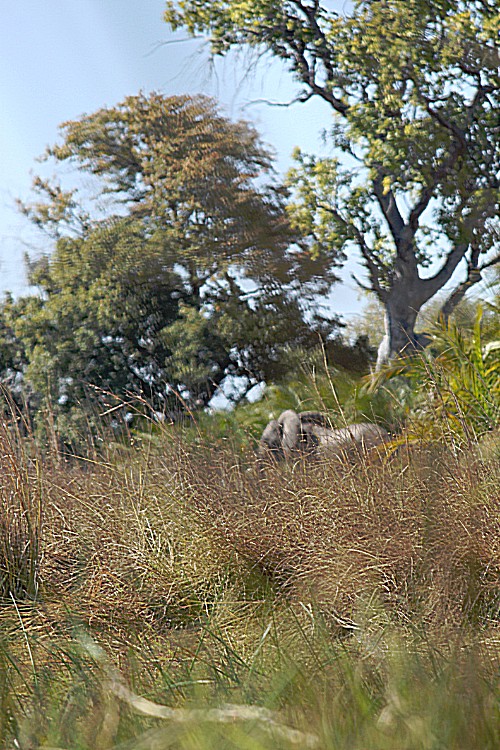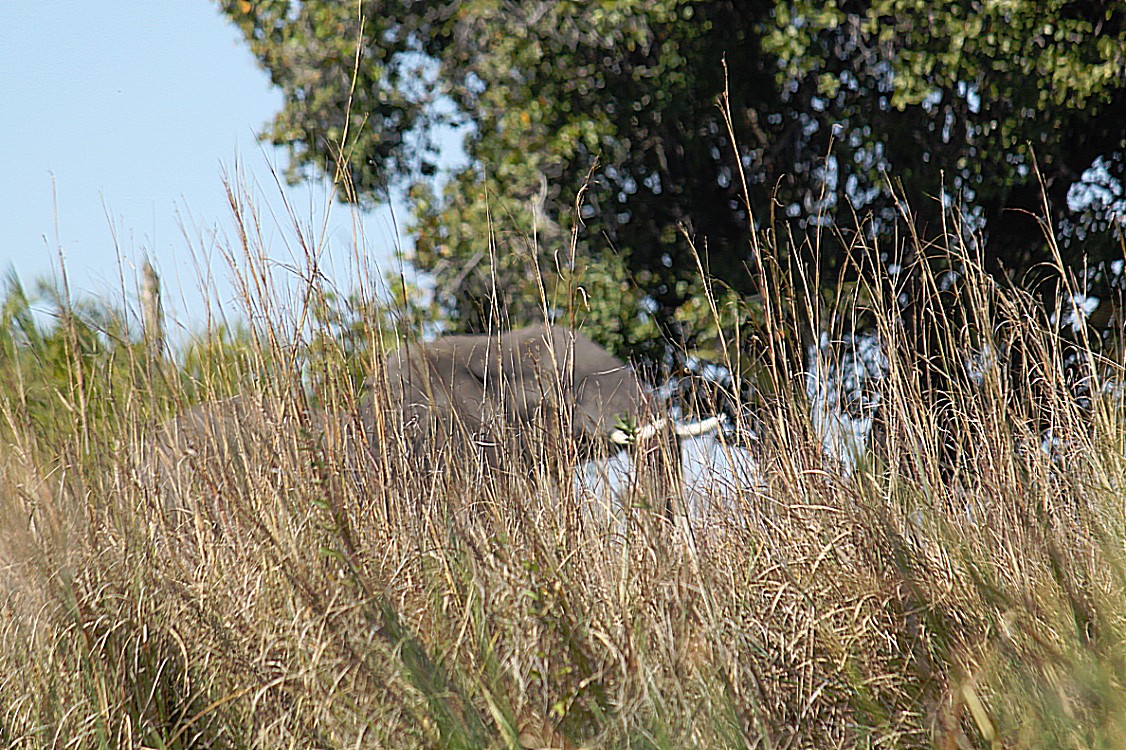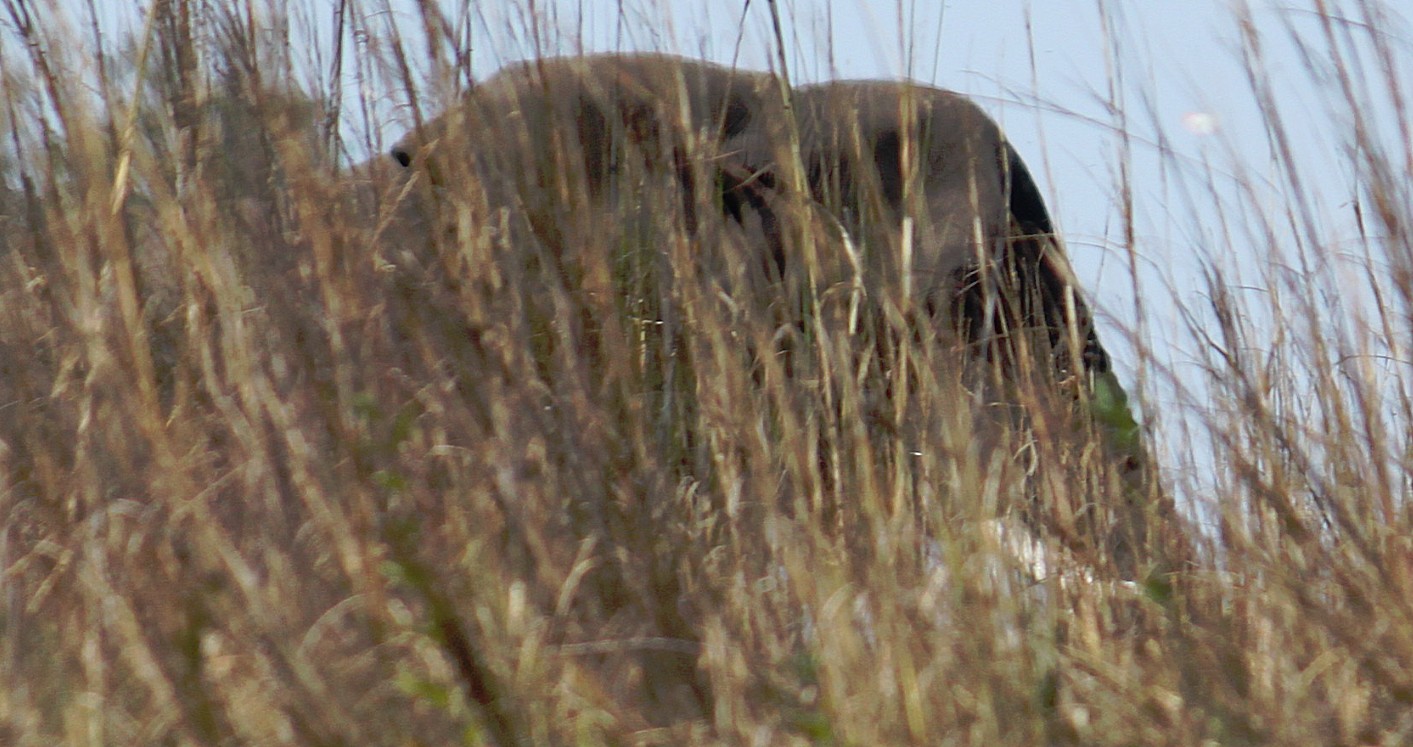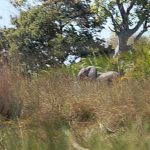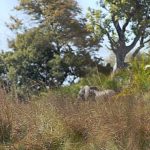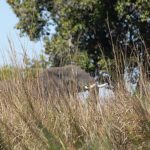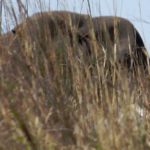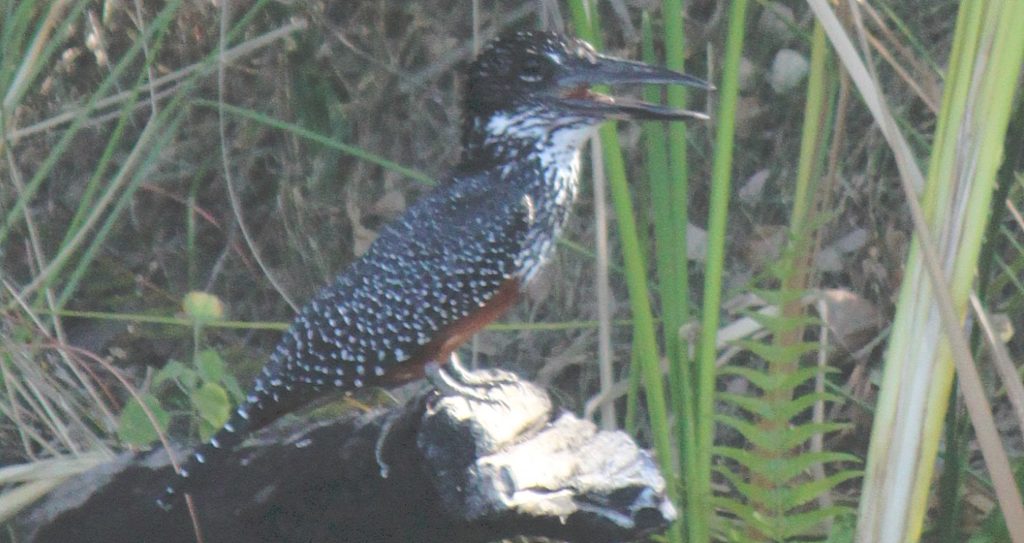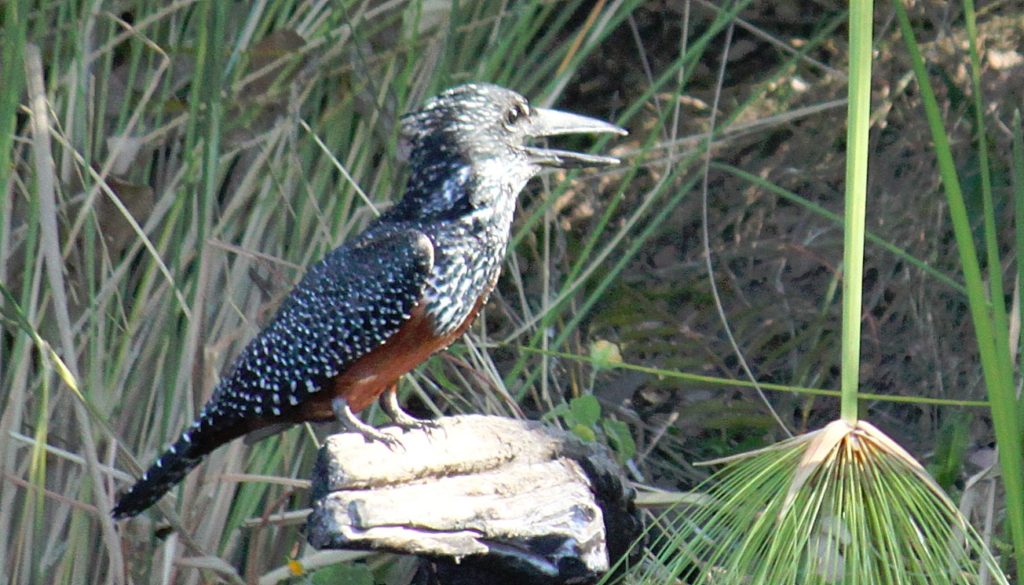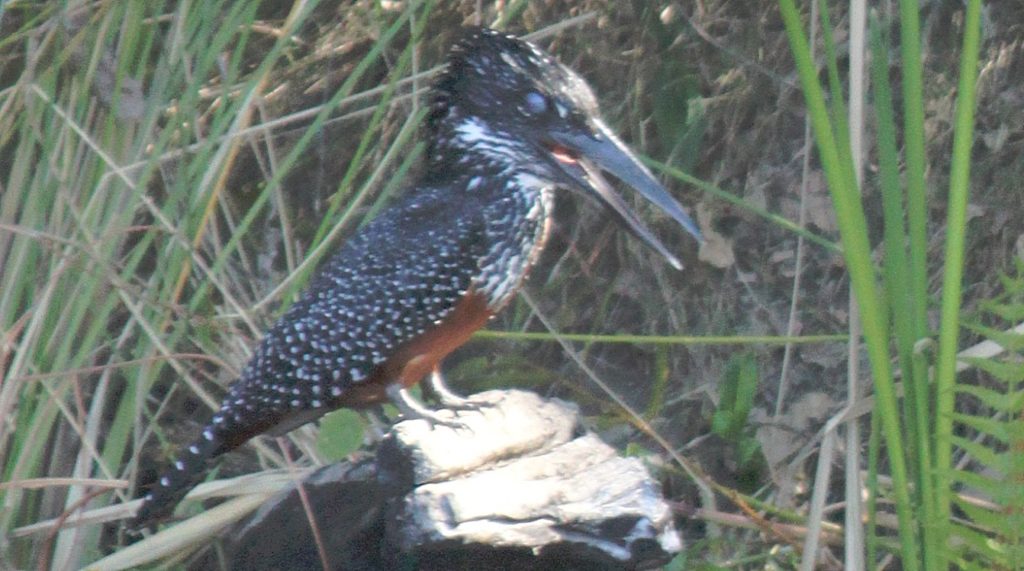2f. Okavango Delta: The heart of the Okavango Delta…
After arriving at a small island in the heart of the Okavango, The Wandelgek left the speedboat and after meeting with a mokoro poler, stepped into a mokoro.
Mokoro
A mokoro (also spelt makoro) (locally: [mʊˈkɔrɔ], pl.: mekoro) is a type of canoe commonly used in the Okavango Delta, Botswana. It is propelled through the shallow waters of the delta by standing in the stern and pushing with a pole, in the same manner as punting.
Mekoro are traditionally made by digging out the trunk of a large straight tree, such as an ebony tree or Kigelia tree.
Modern mekoro, however, are increasingly made of fibre-glass, one of the advantages of which is the preservation of more of the large endangered trees. Mokoro safaris are a popular way for tourists to visit the delta, much of which is in national parks, but the boats are still a practical means of transport for residents to move around the swamp. The boats are very vulnerable to attack by hippopotamus, which can overturn them with ease. Hippopotamus are reputed to have developed this behaviour after the use of mekoro and other boats for hunting.
Nothing is more relaxing than sitting or lying in a mokoro, being poled through the Okavango, which is like floating through nature and nature enveloping you completely.
The only sound you here are some scattered animal sounds, mostly birds and the stirring of the water by the pole that drives your mokoro.
The sun is high in the sky and your floating through open waterspaces…
and small channels or better tracks, created by hippos in the vast and thick reed lands.
The reeds consist of common and papyrus reeds…
You’ll float by the most beautiful waterlilys…
and you’ll see birds like the bee-eaters or jacaranda.
After about 1,5 hour The Wandelgek reached another small island where lunch was consumed and where he did a short walk trying to find elephants or other wildlife.
But the elephants had moved to far away, Some Elephant manure was found though.
After this walk The Wandelgek boarded his mokoro again and was poled for another 1,5 hours through the awesome delta.
First the mokoros went to the other side of the island and yesssss … there we found the elephants that belonged to the manure 😉
Then the mokoros were poled back to the island where the speedboats were waiting.
The speedboats brought us in another hour to the truck.
While travelling to the truck The Wandelgek saw another highlight of birdlife in the delta…
The Giant Kingfisher
The giant kingfisher (Megaceryle maxima) is the largest kingfisher in Africa, where it is a resident breeding bird over most of the continent south of the Sahara Desert other than the arid southwest.
The giant kingfisher is 42–48 cm (16½-18⅞ inches) long, with a large crest and finely spotted white on black upperparts. The male has a chestnut breast band and otherwise white underparts with dark flank barring, and the female has a white-spotted black breast band and chestnut belly.
Call
The call is a loud wak wak wak.
Diet
This large species feeds on crabs, fish, and frogs, caught in the typical kingfisher way by a dive from a perch.
After unboarding we were again driving for an hour towards the road where our huge truck Karen was waiting to return us to the lodge…

